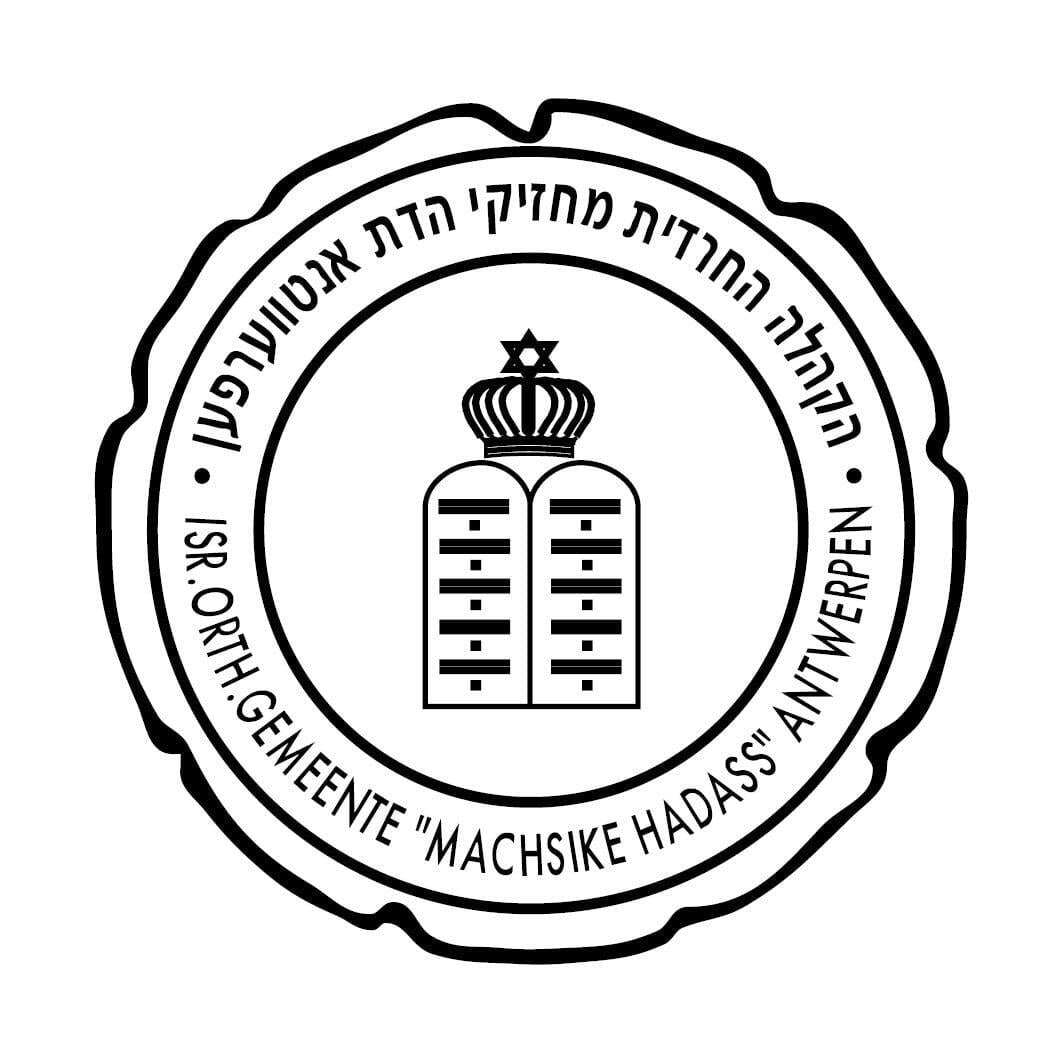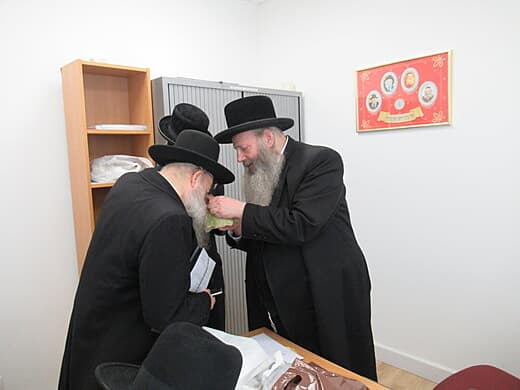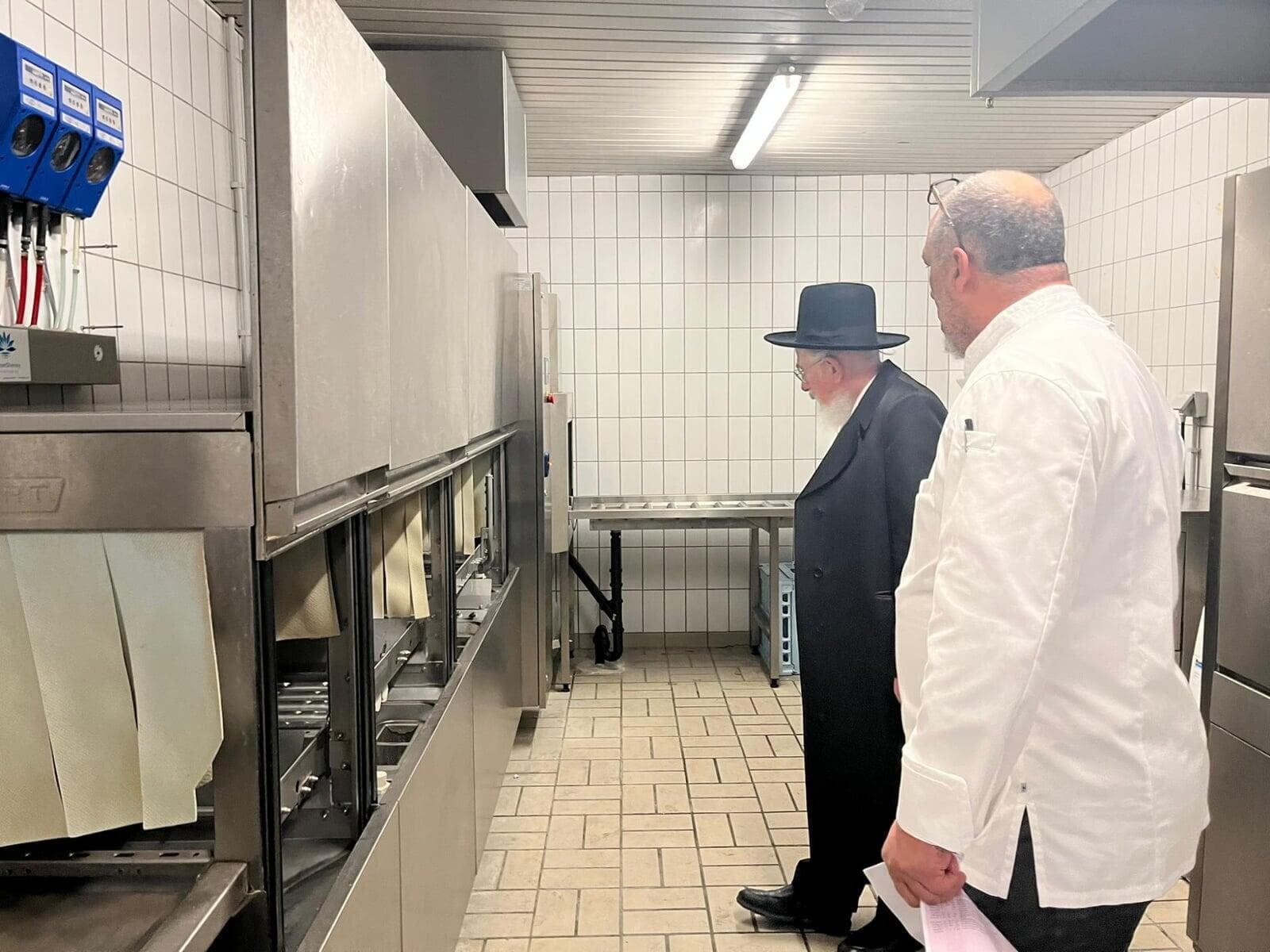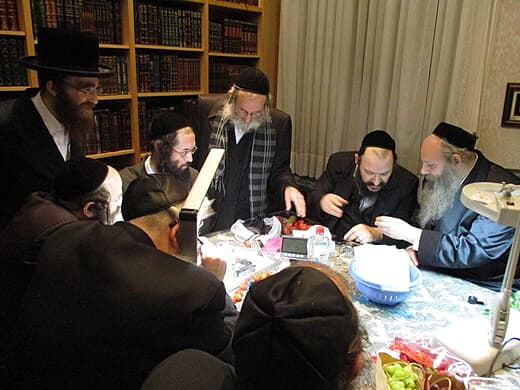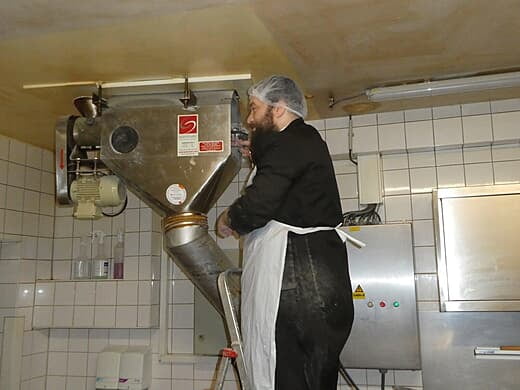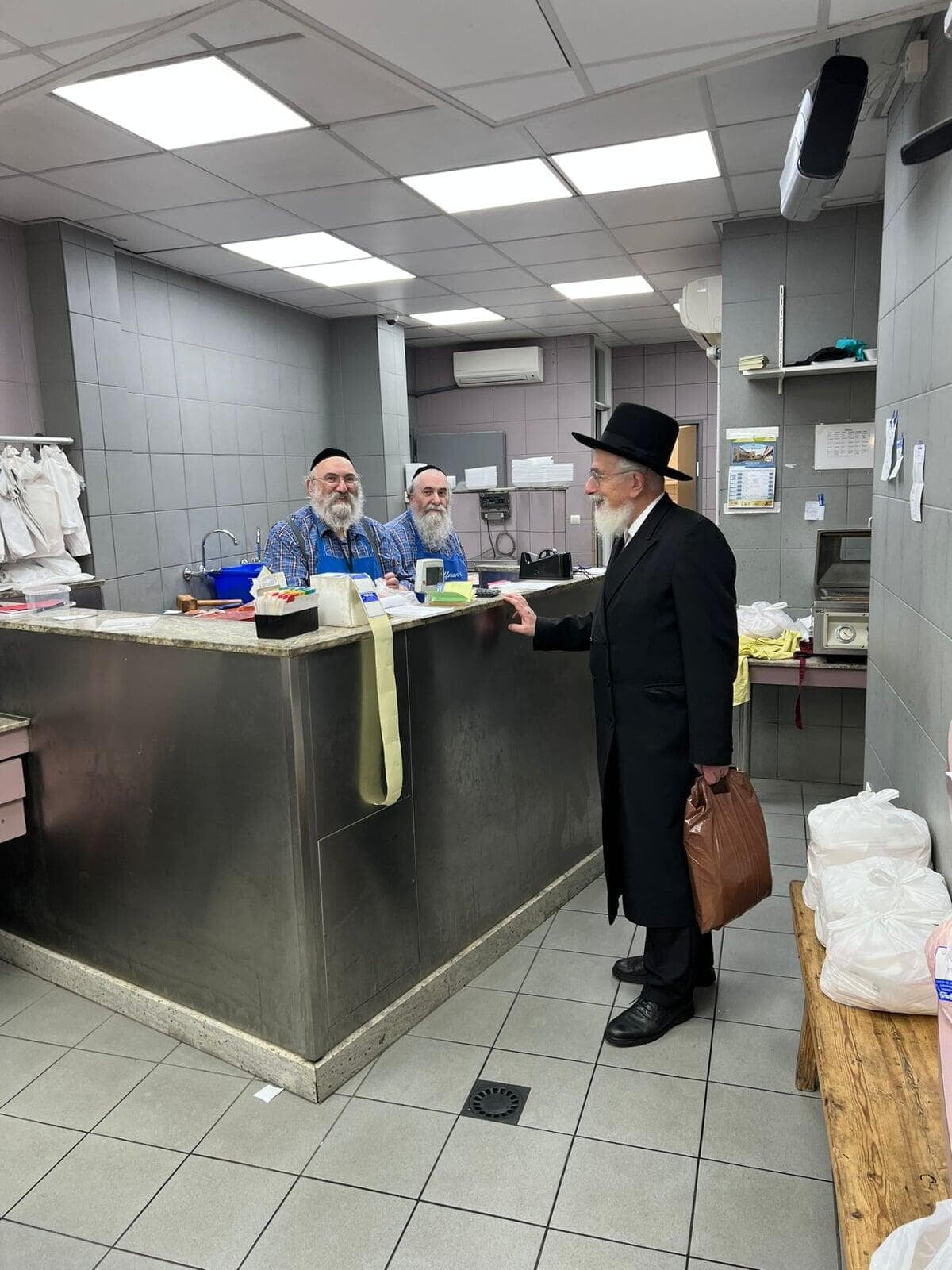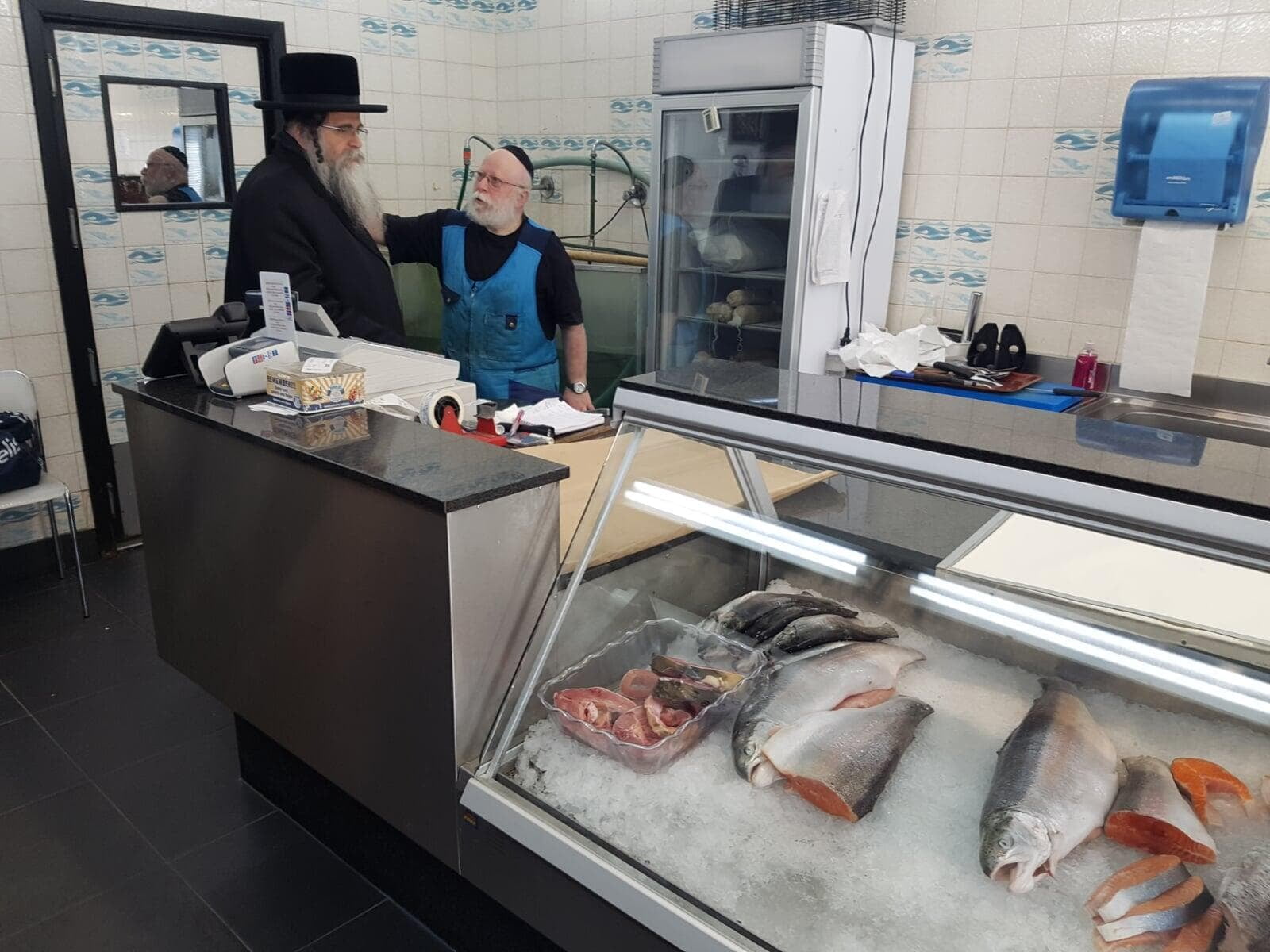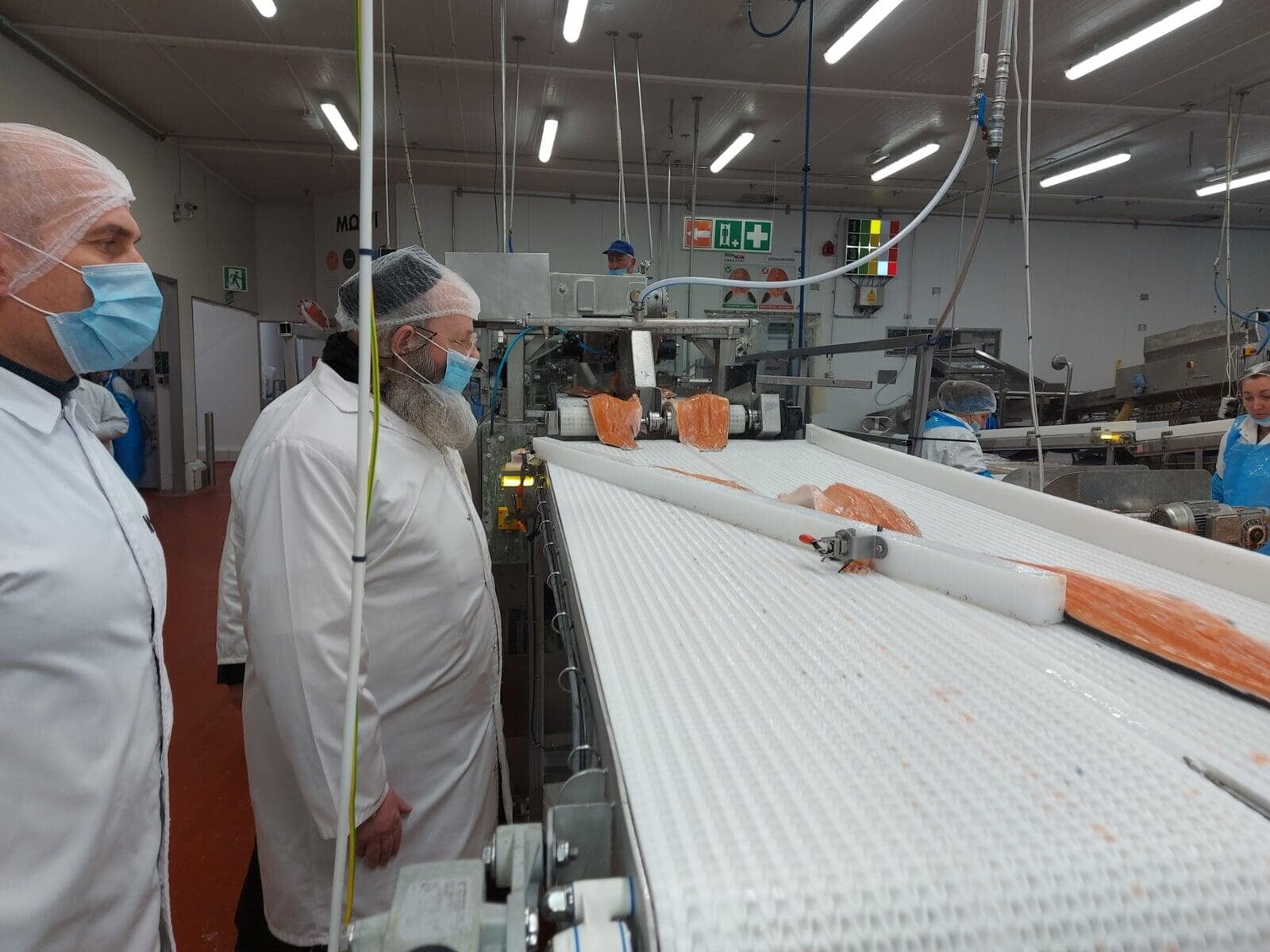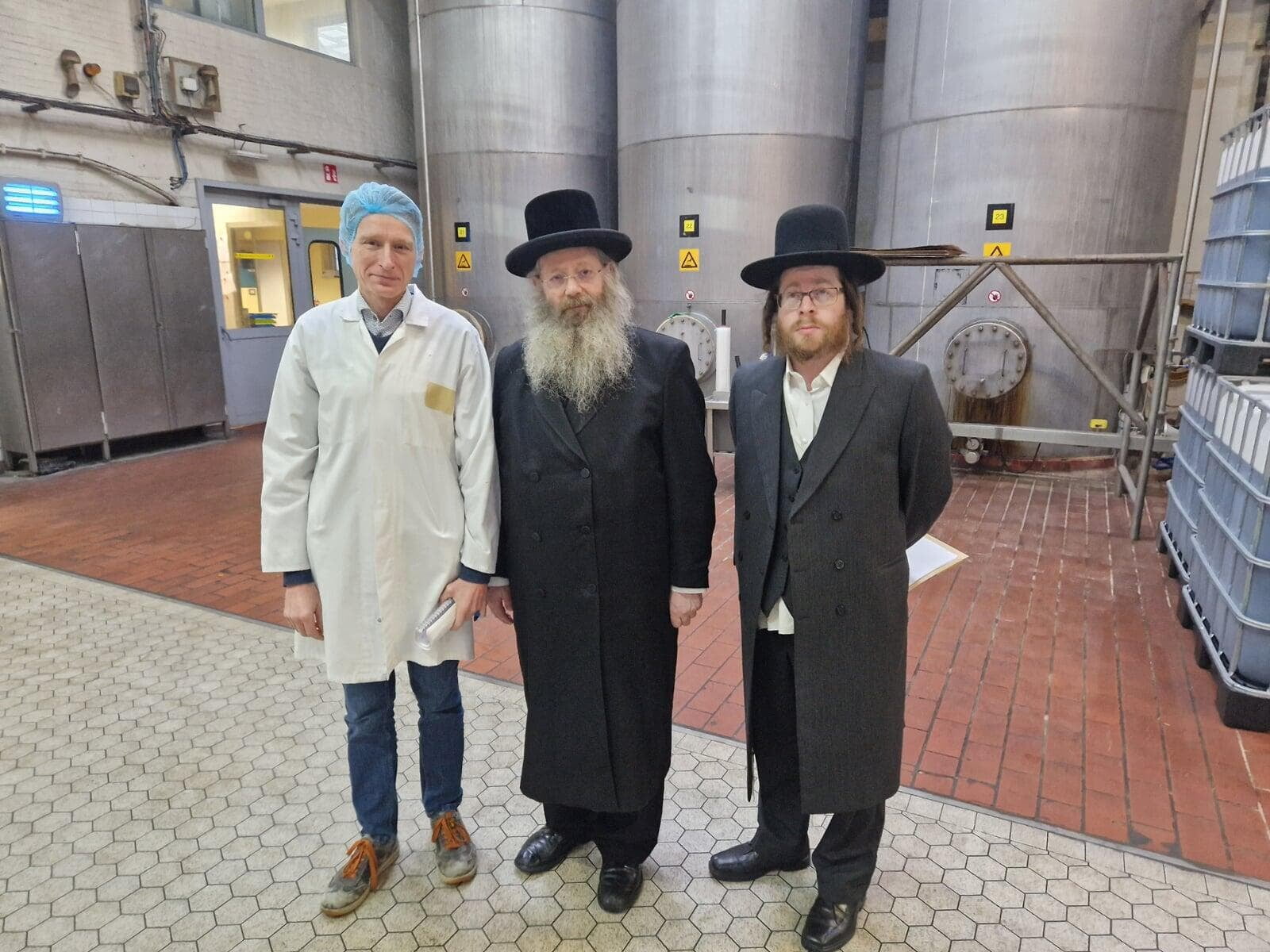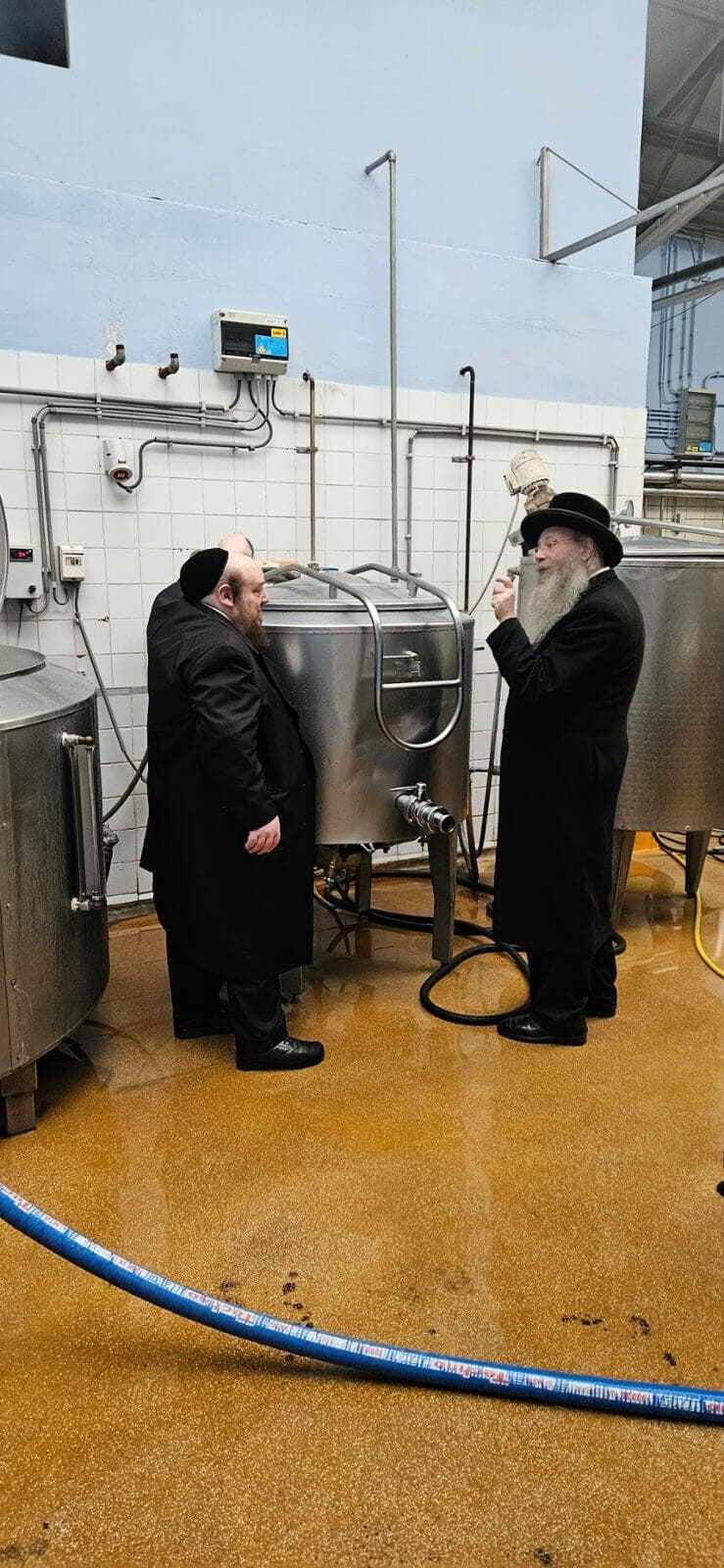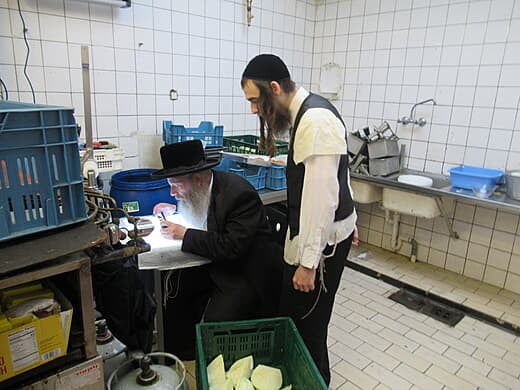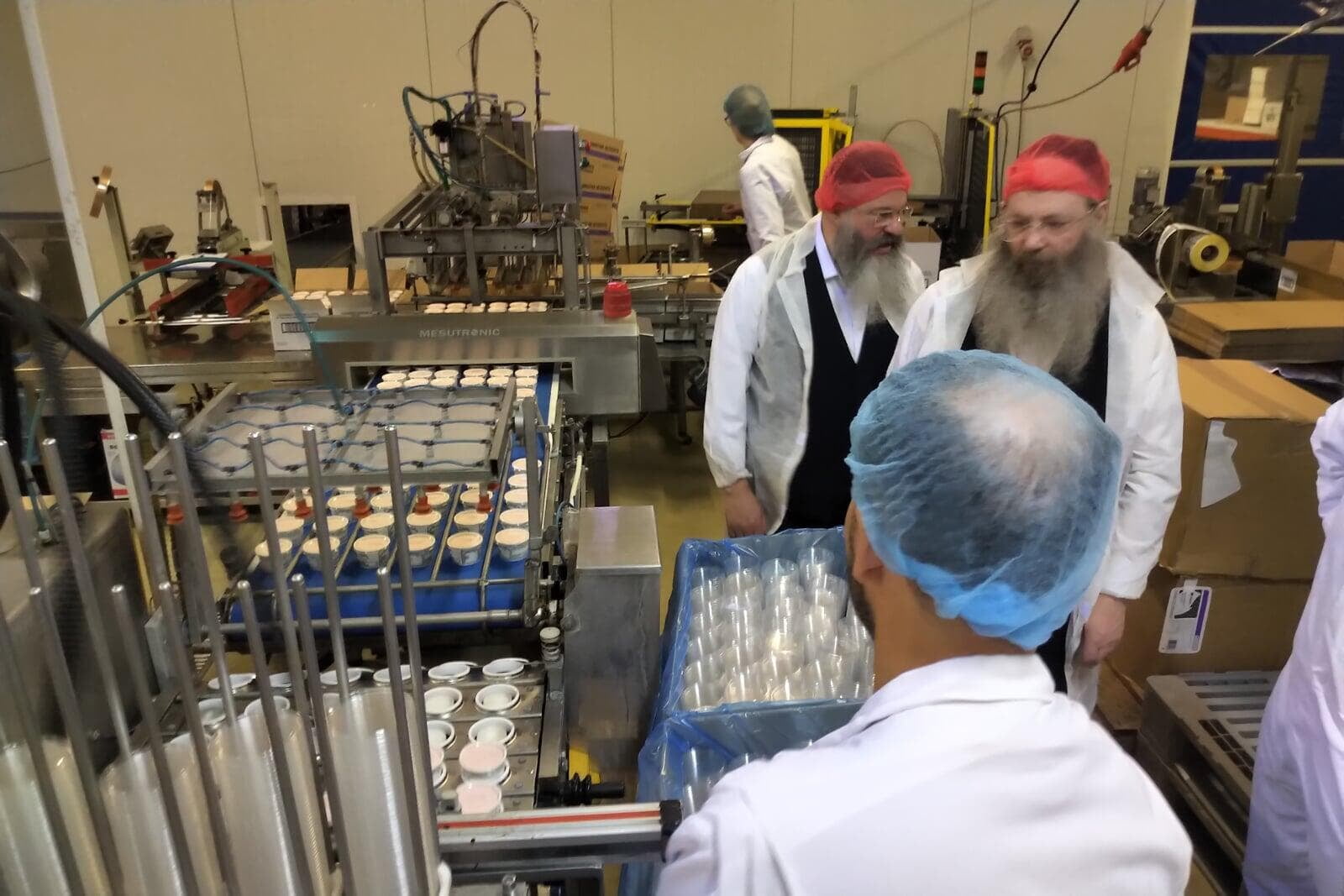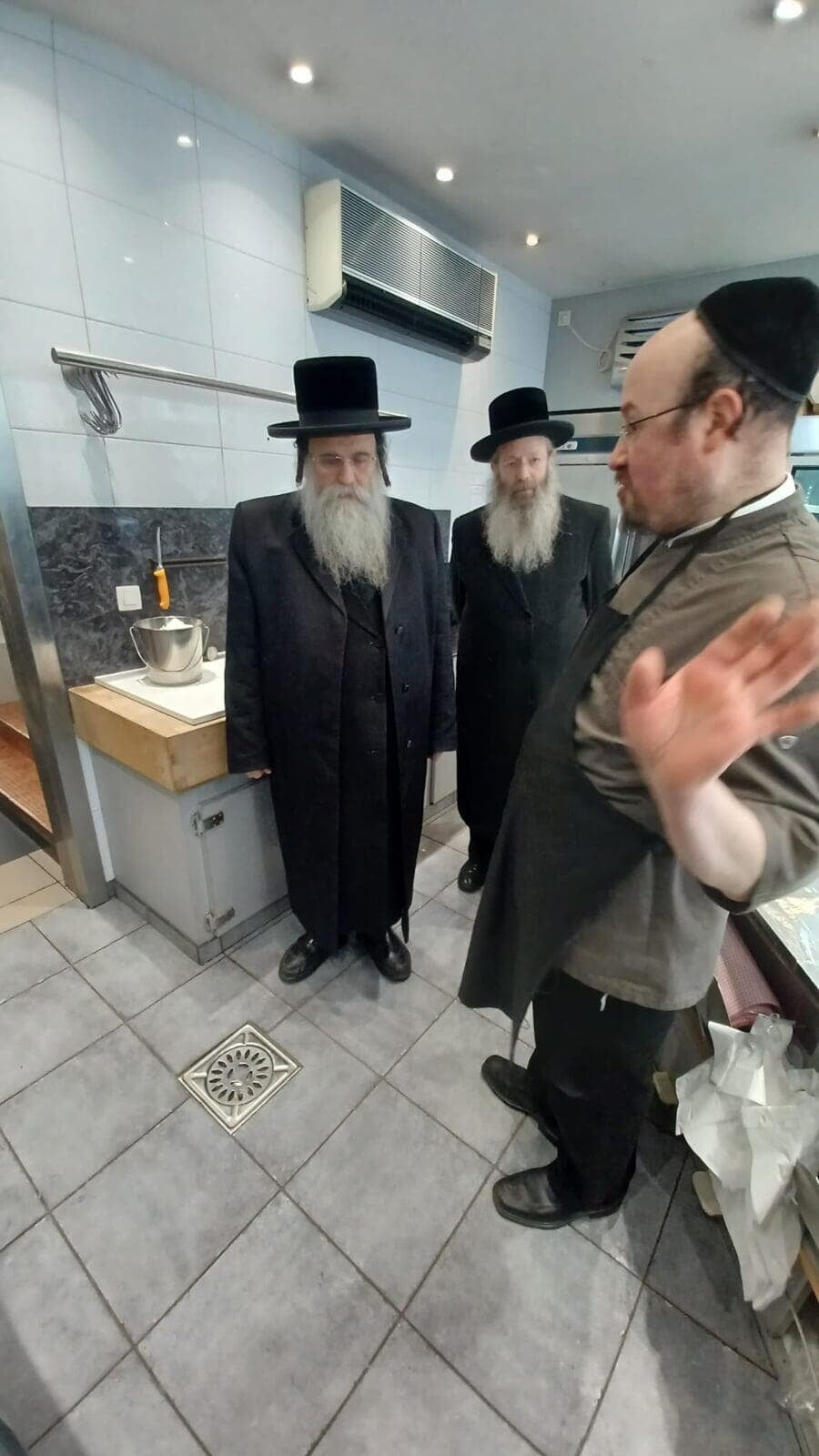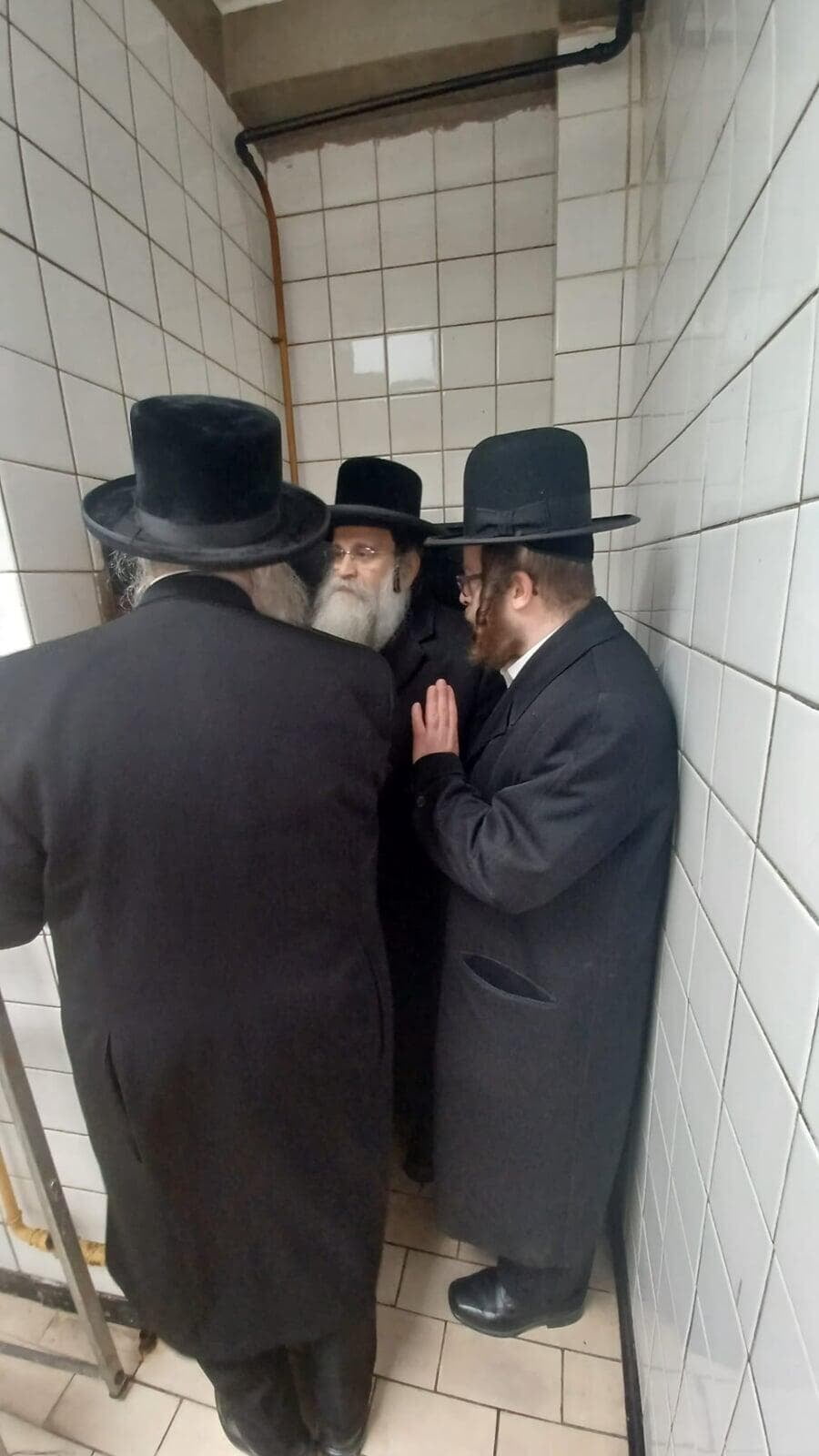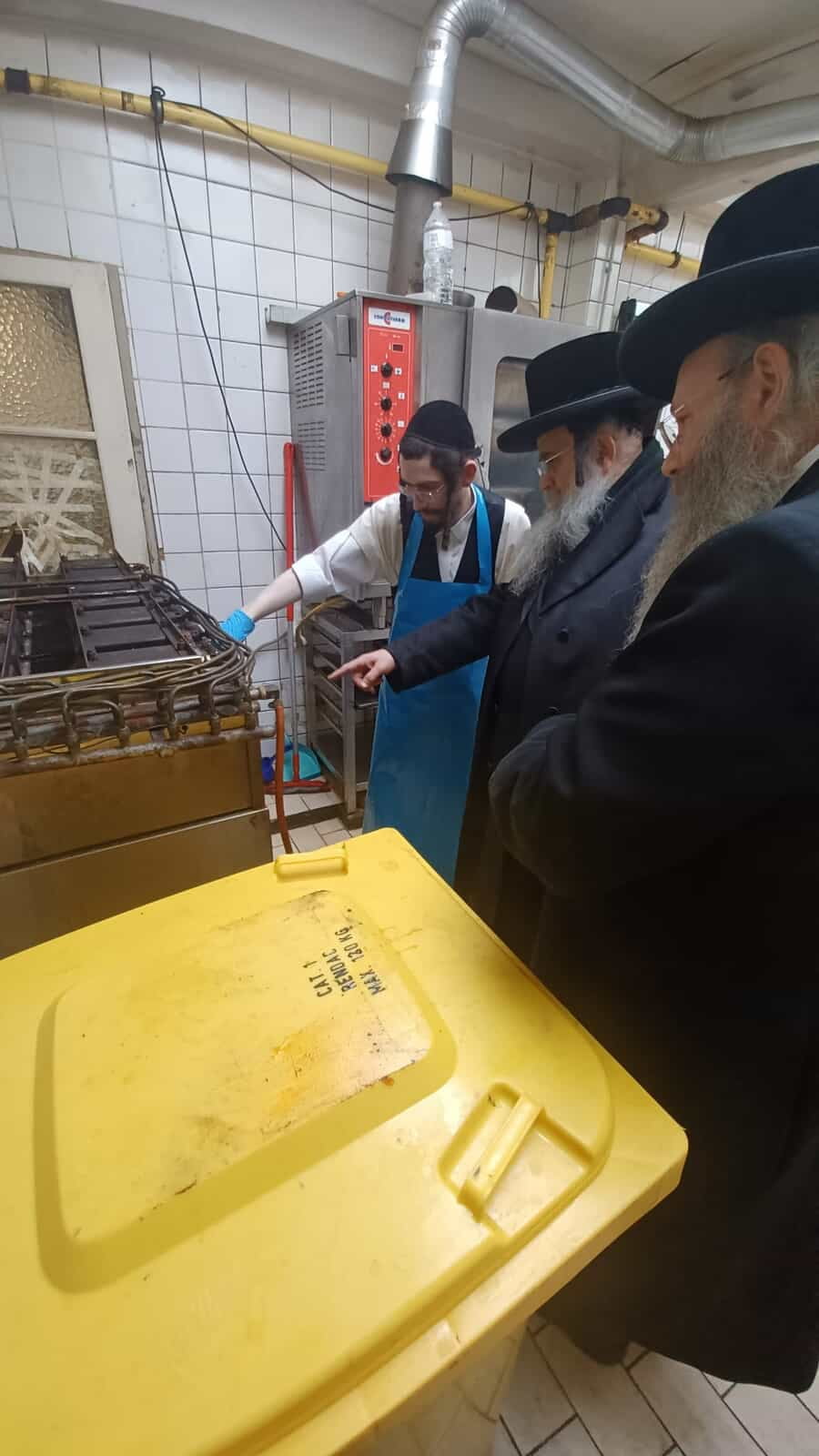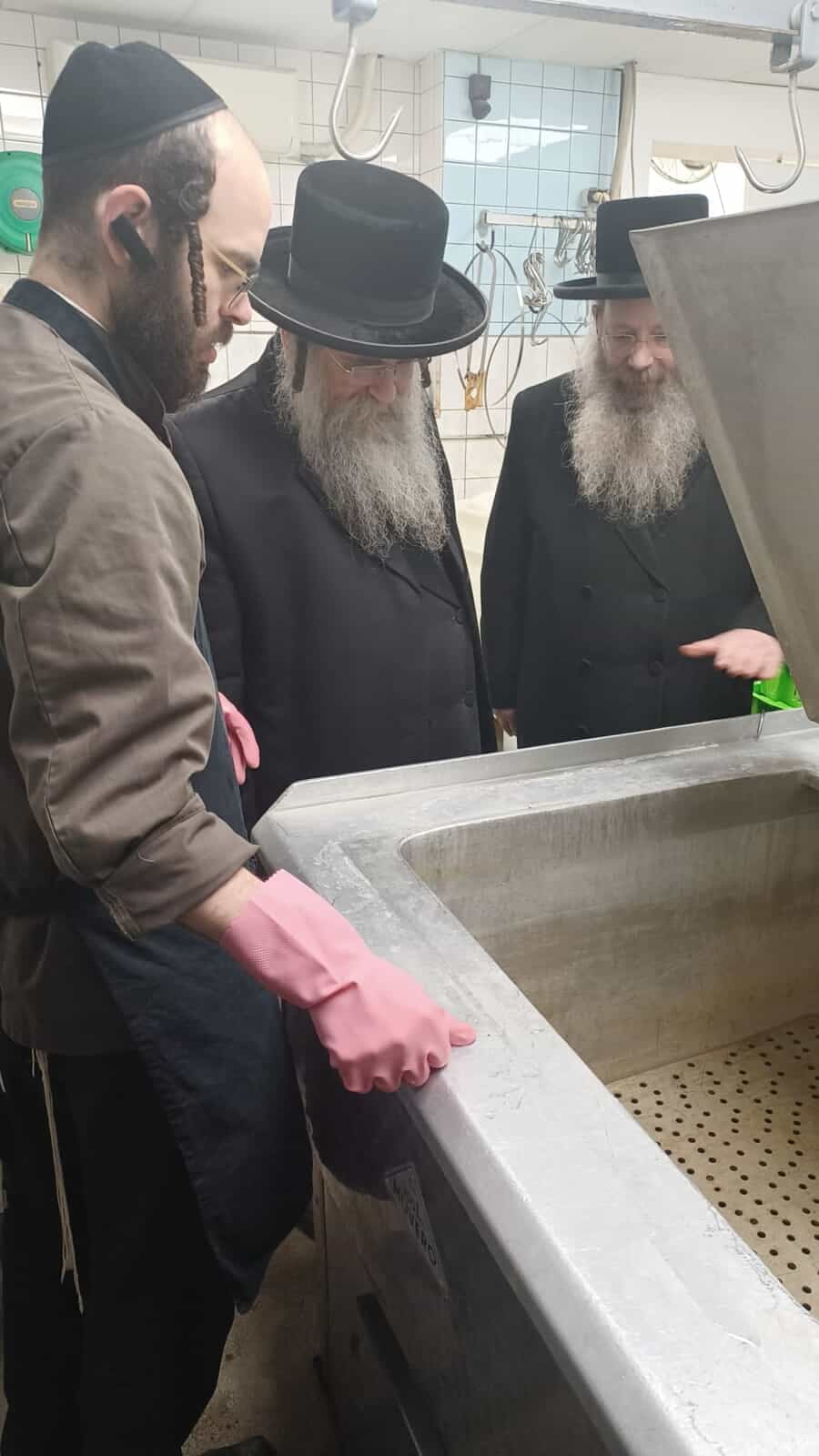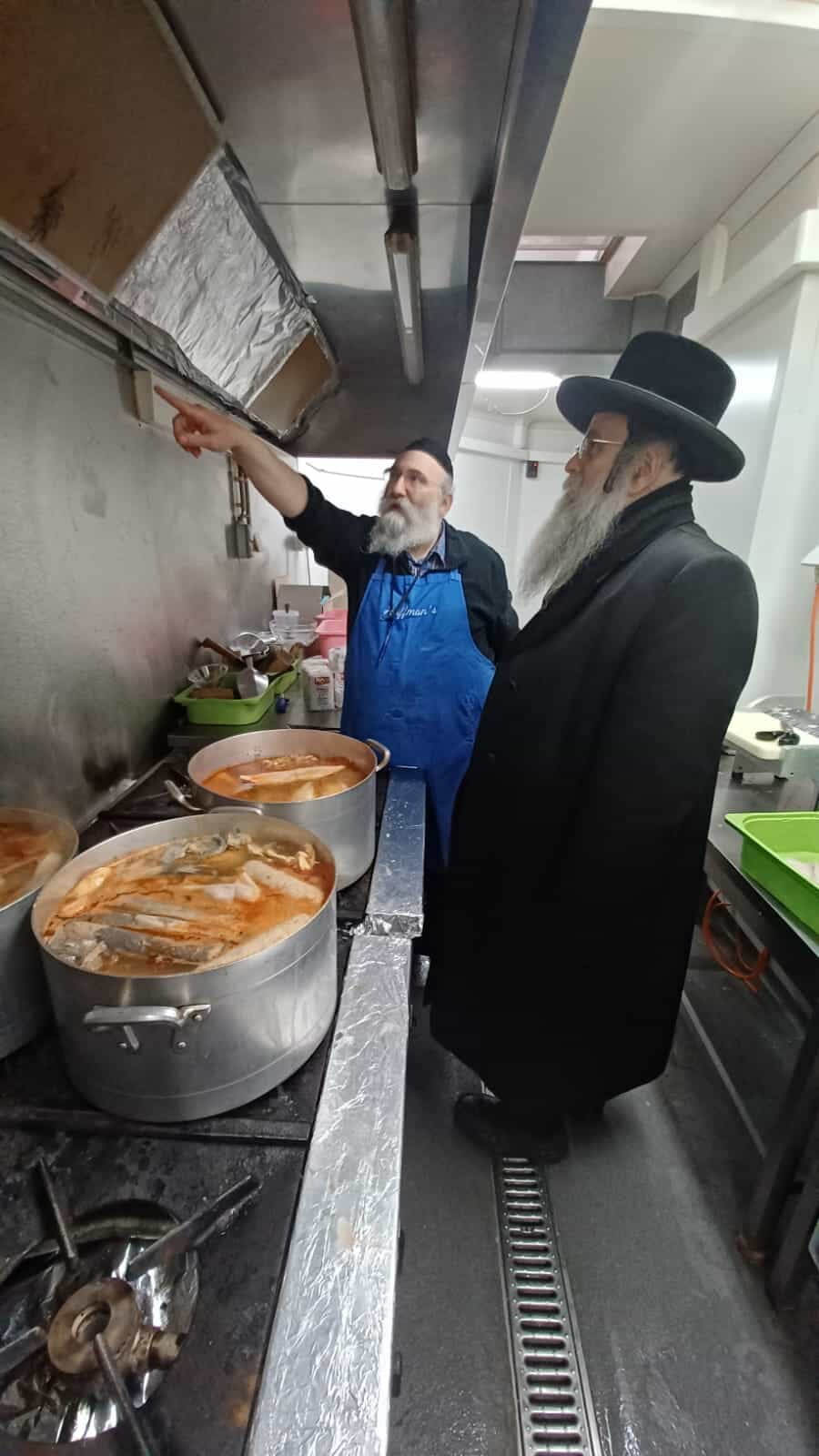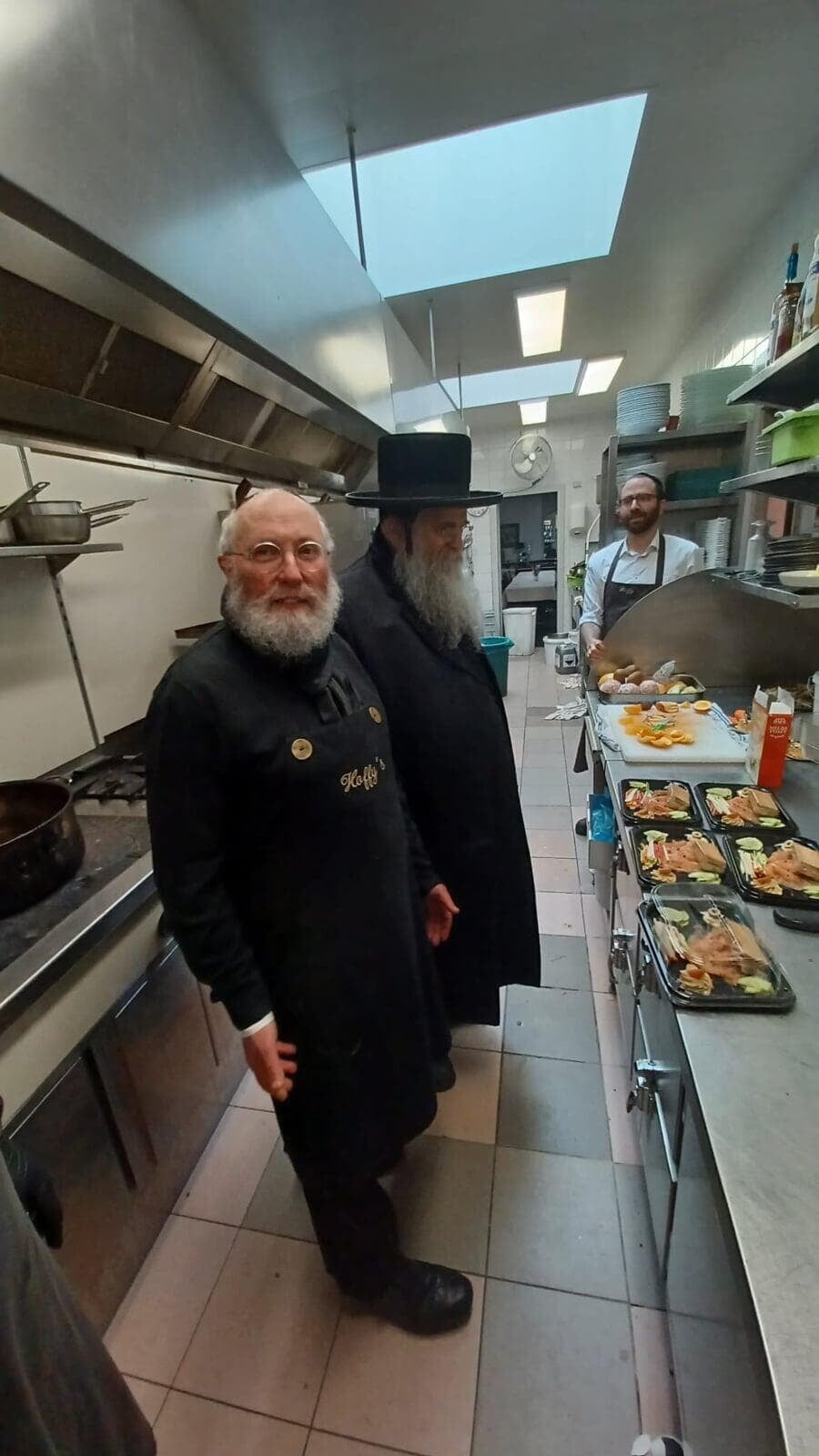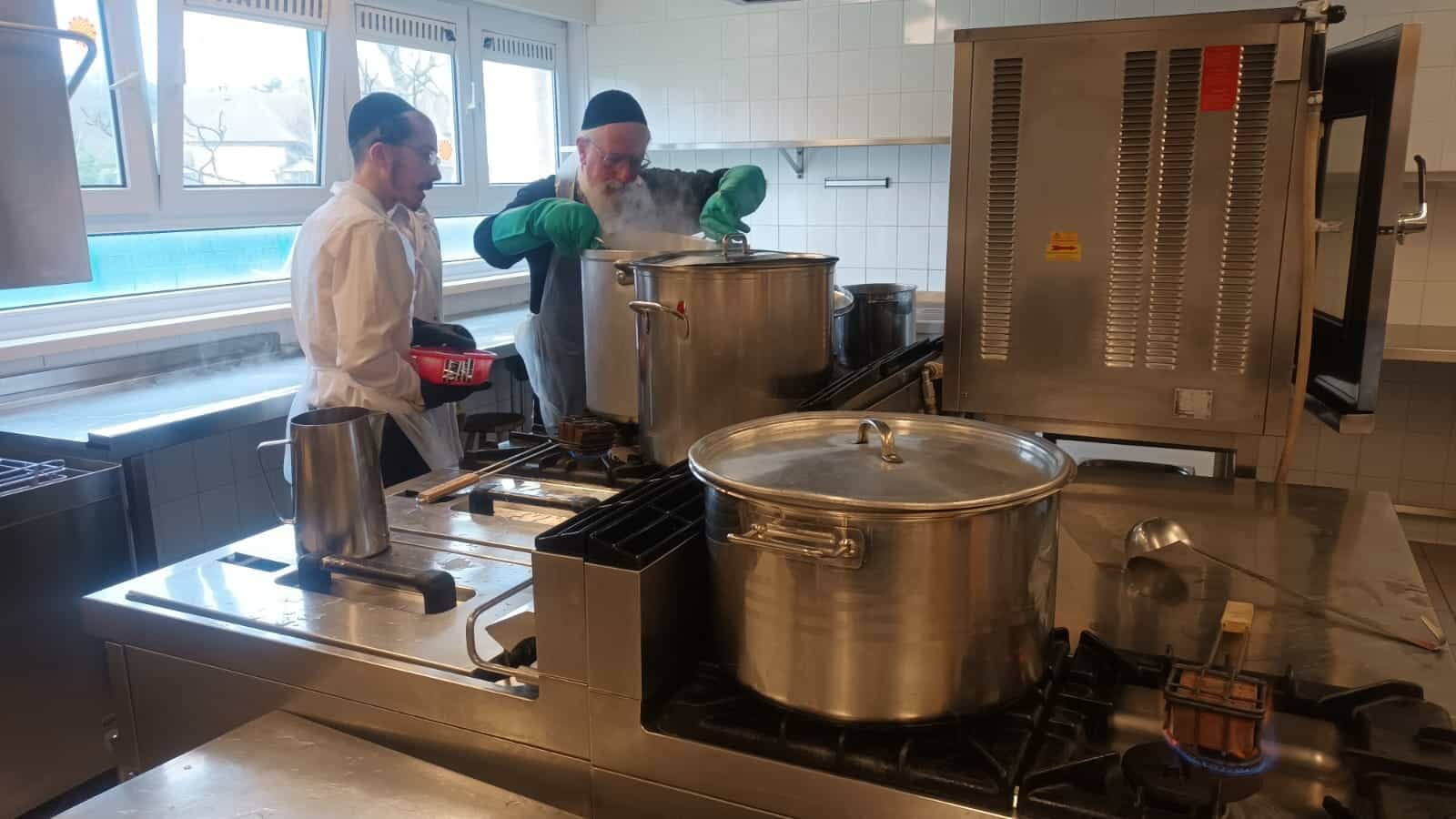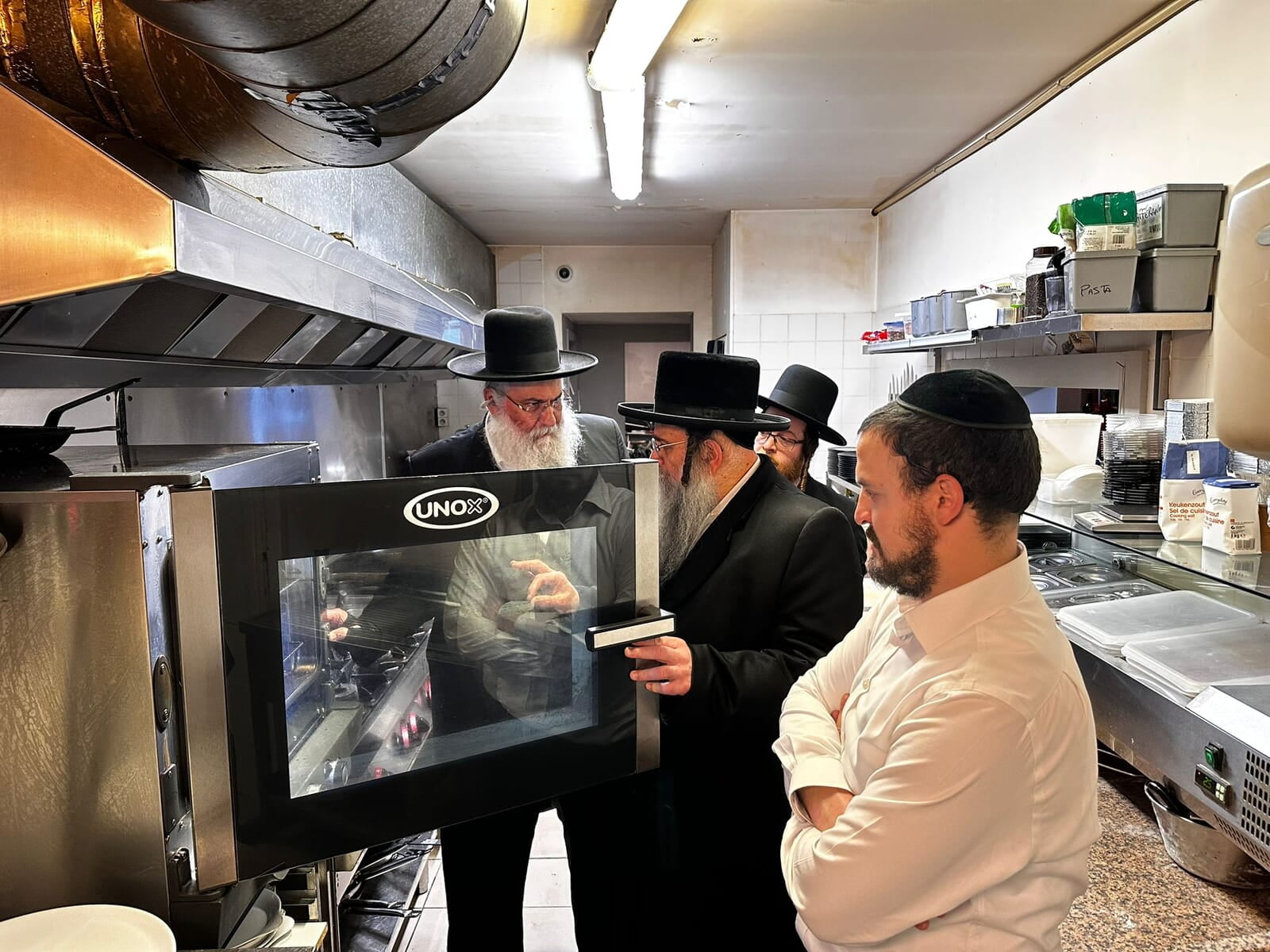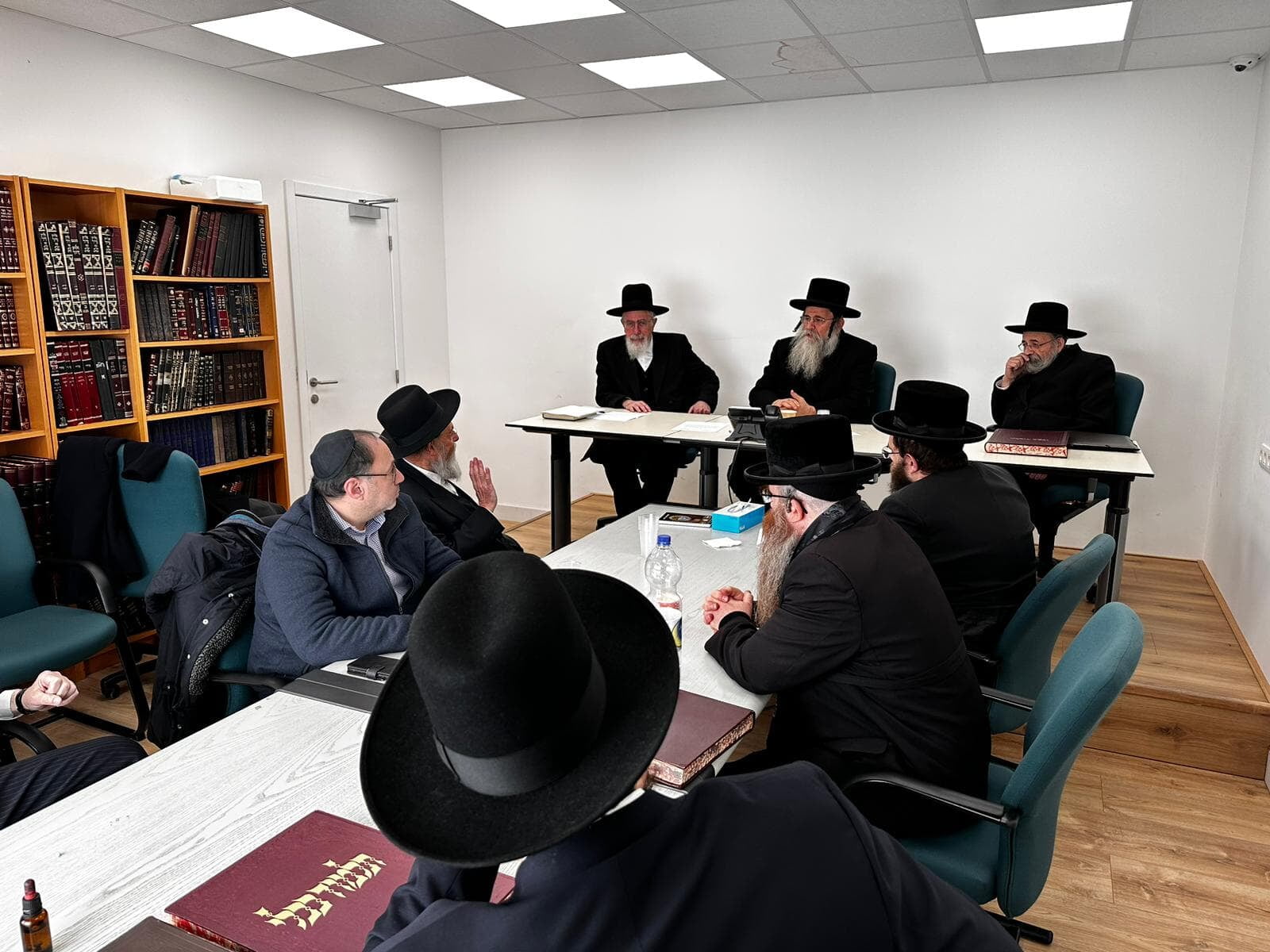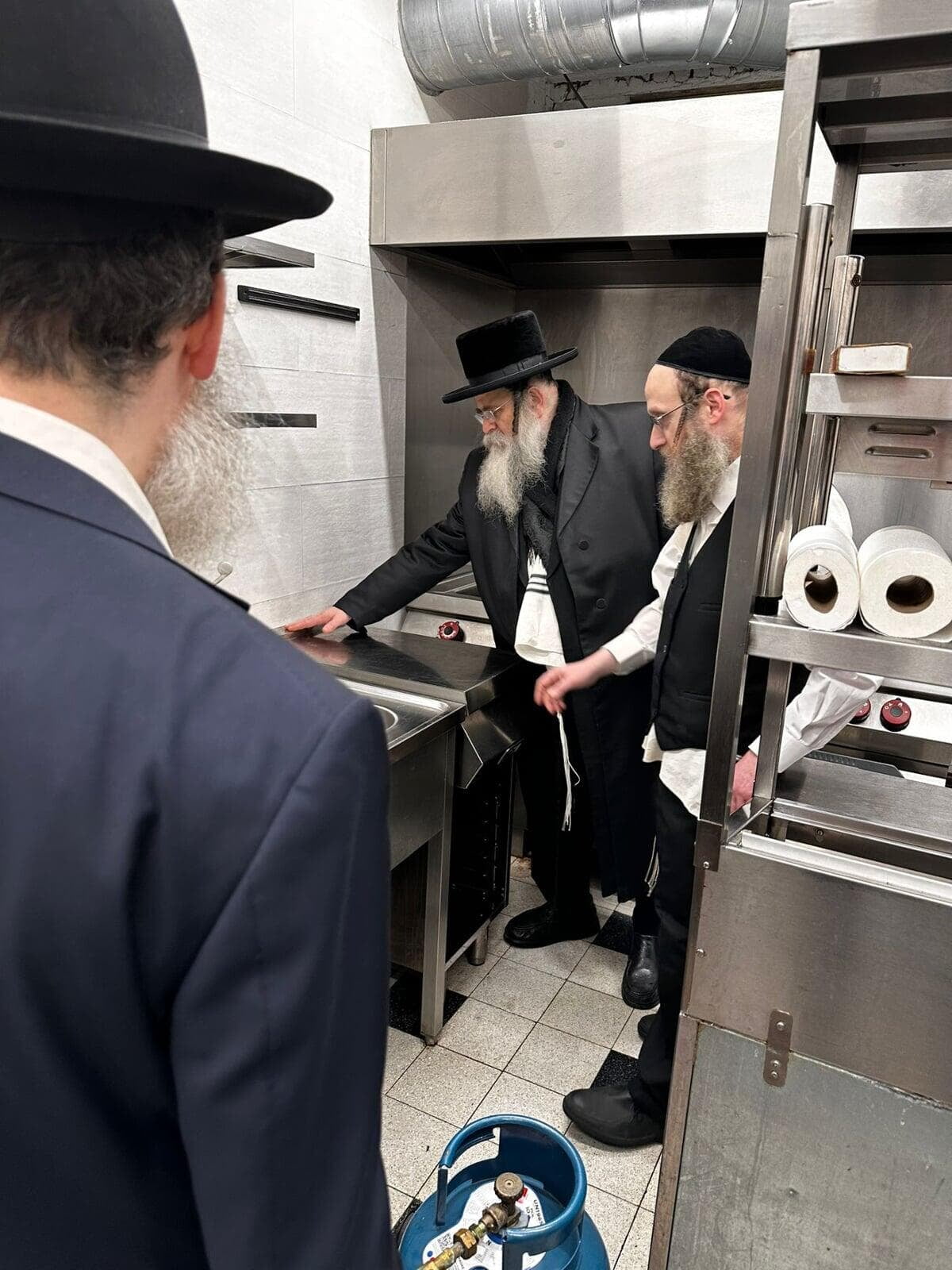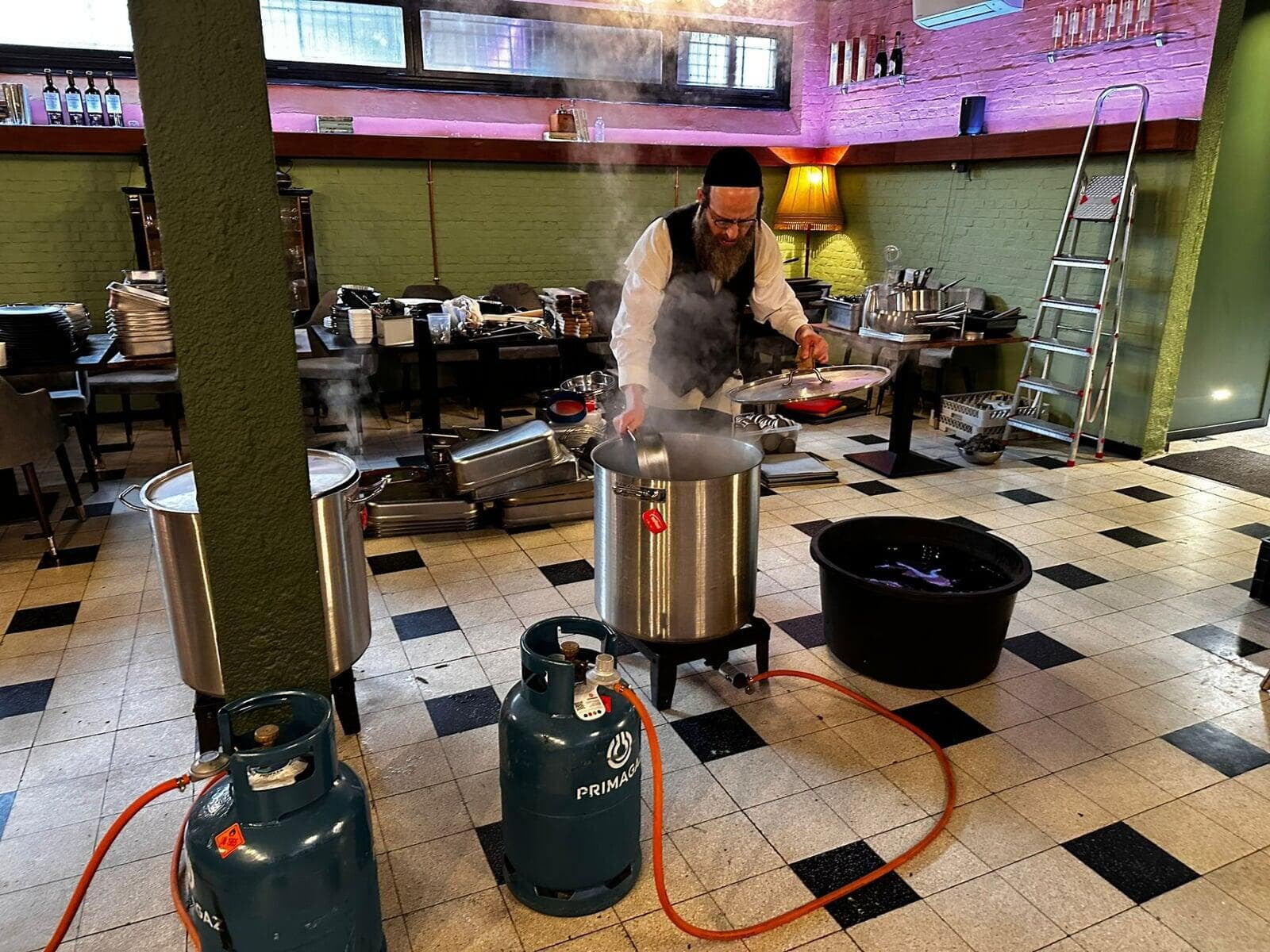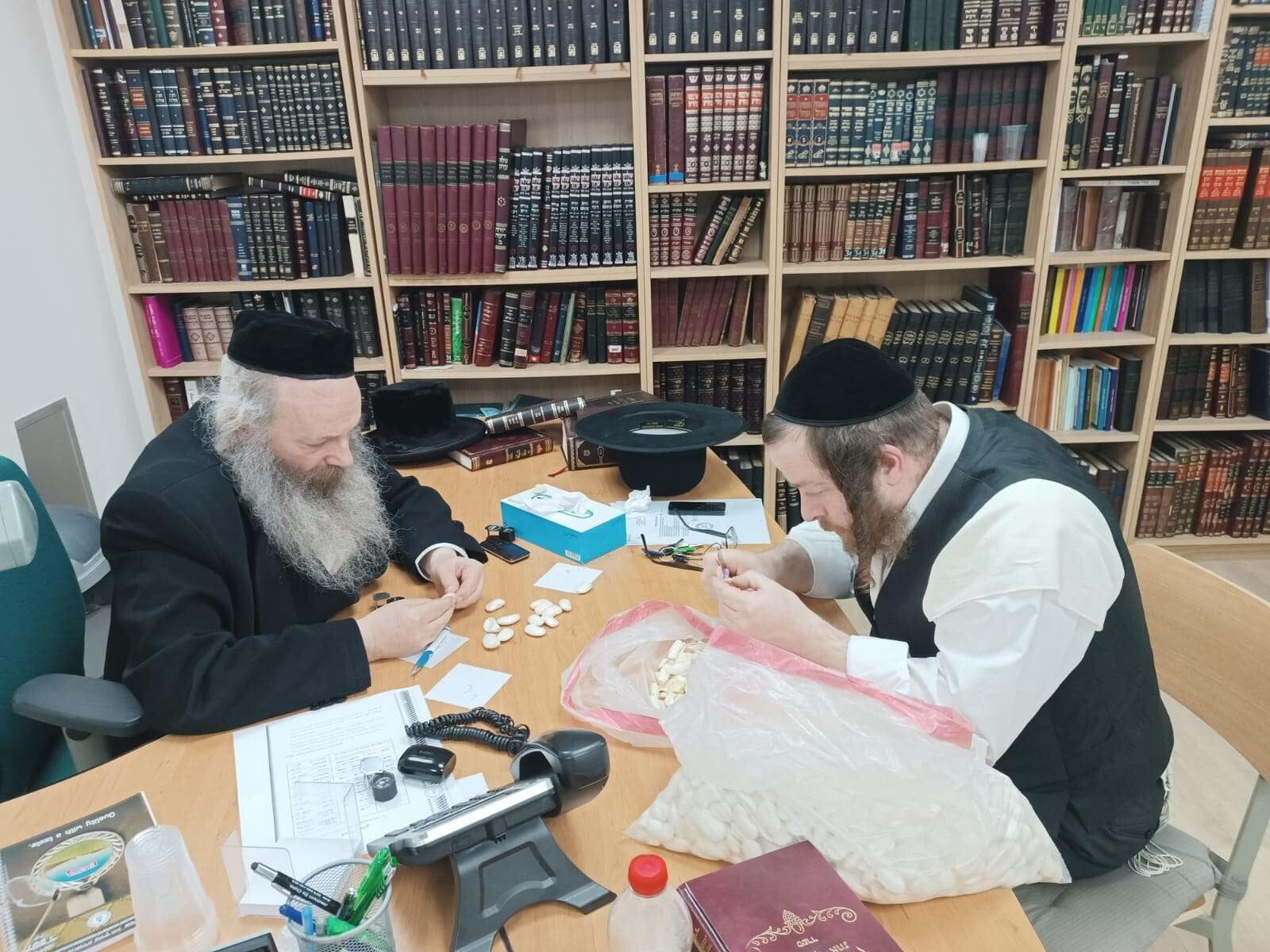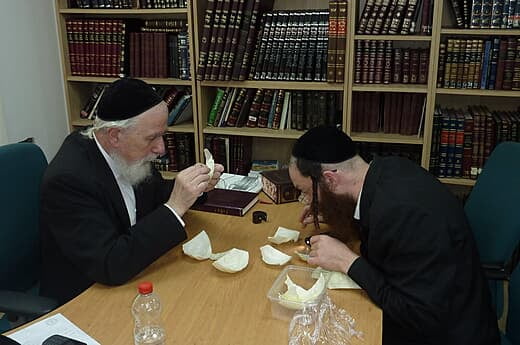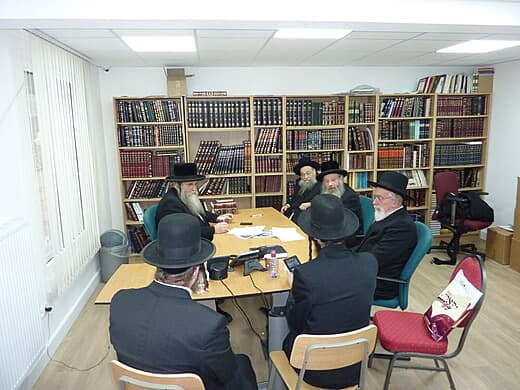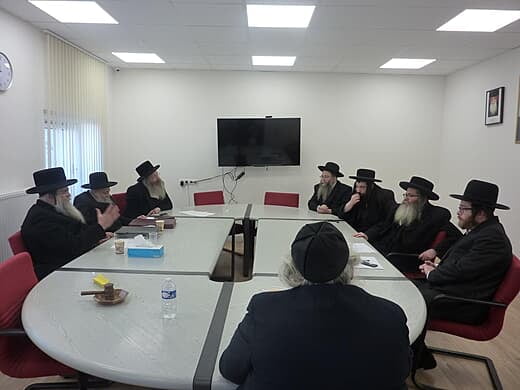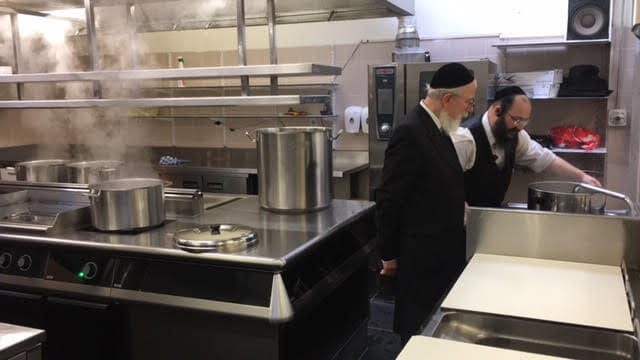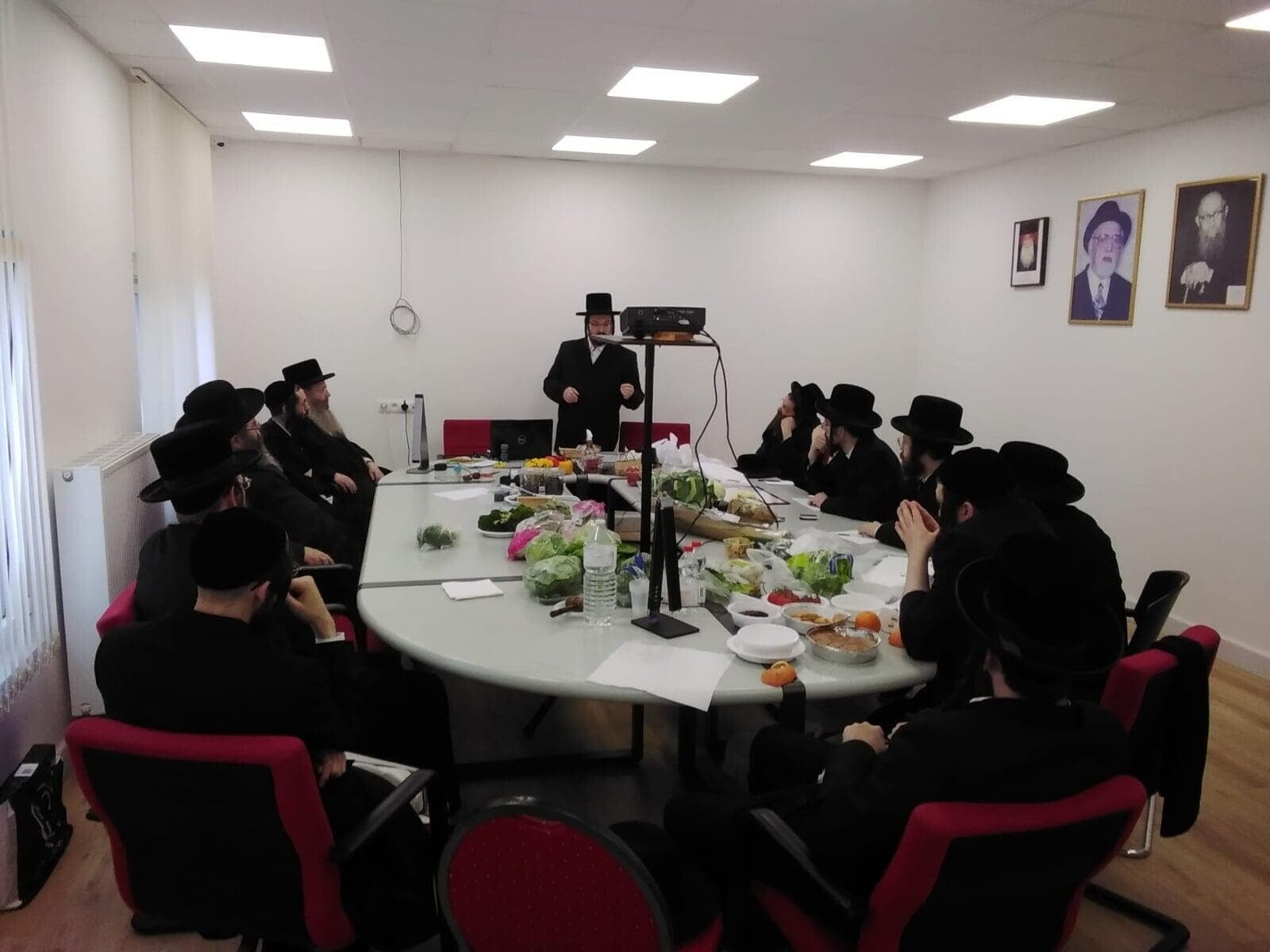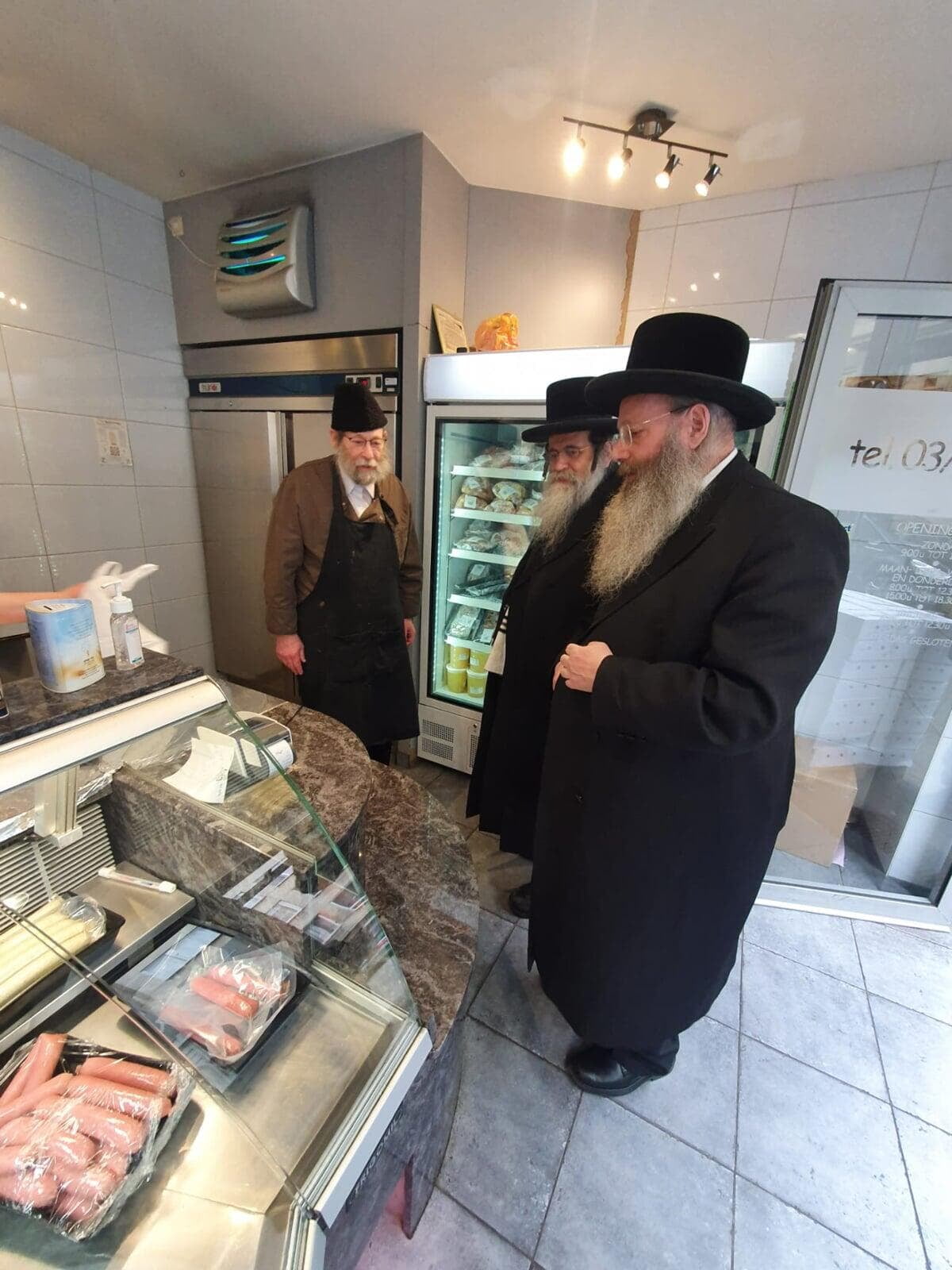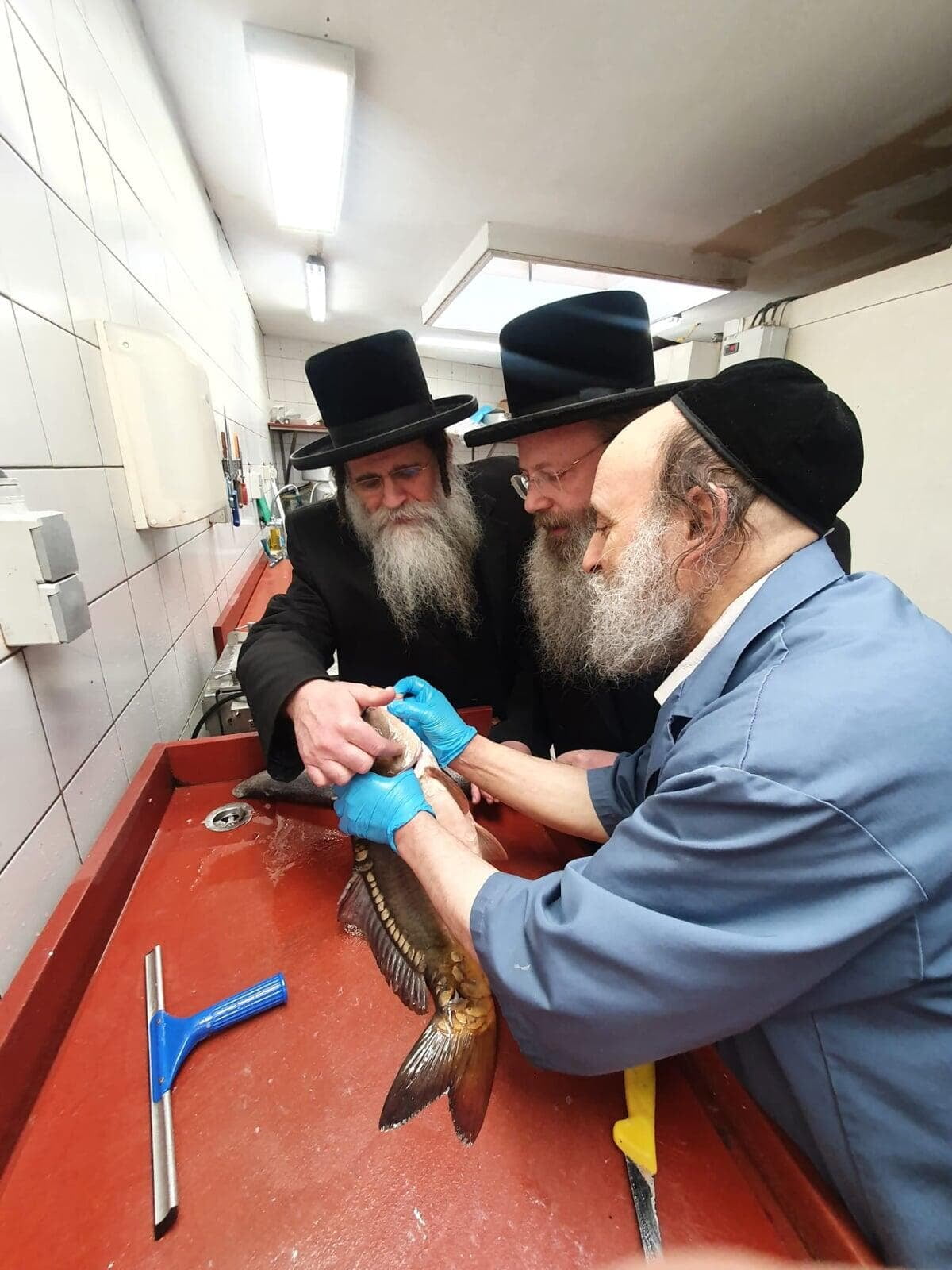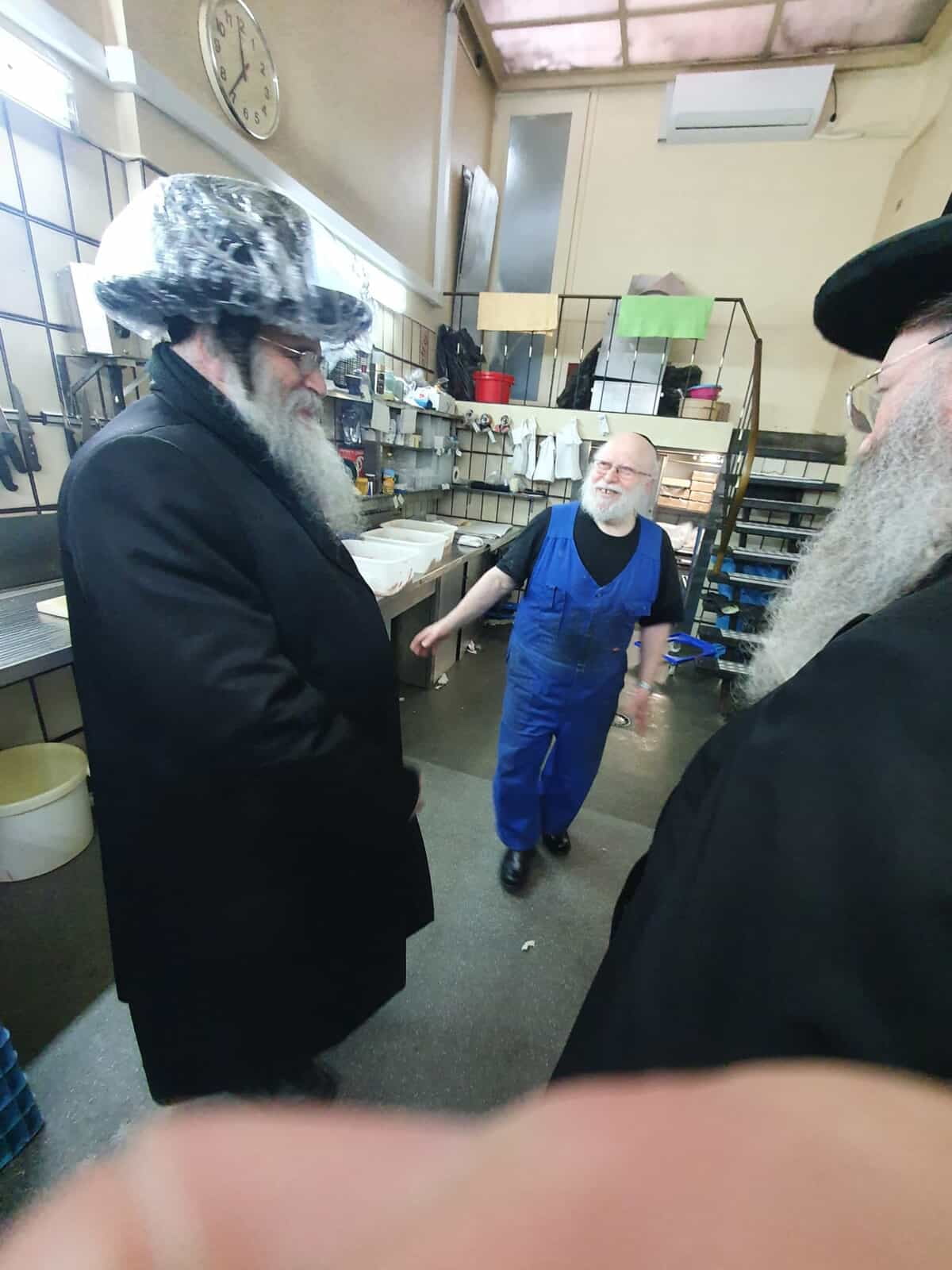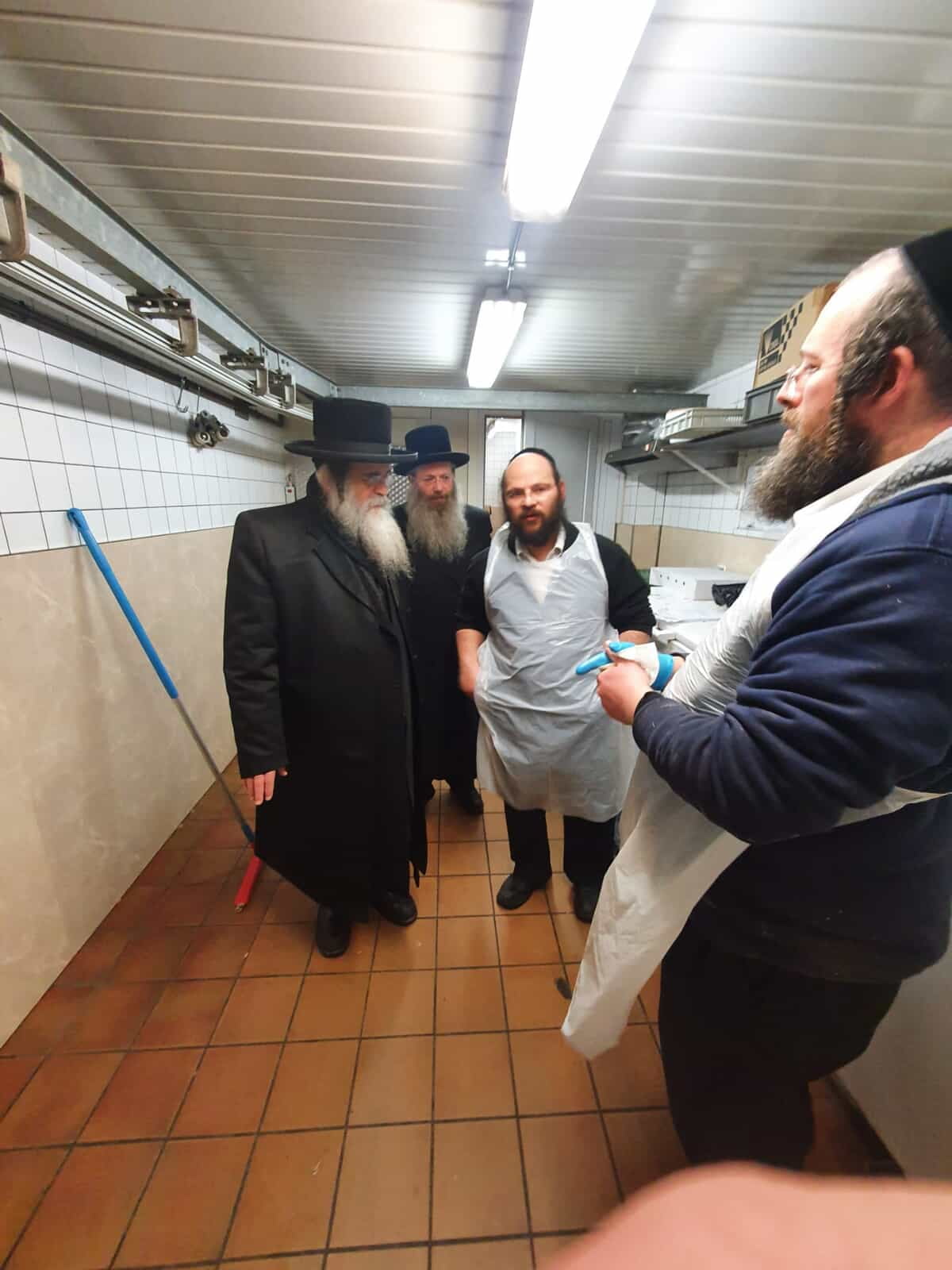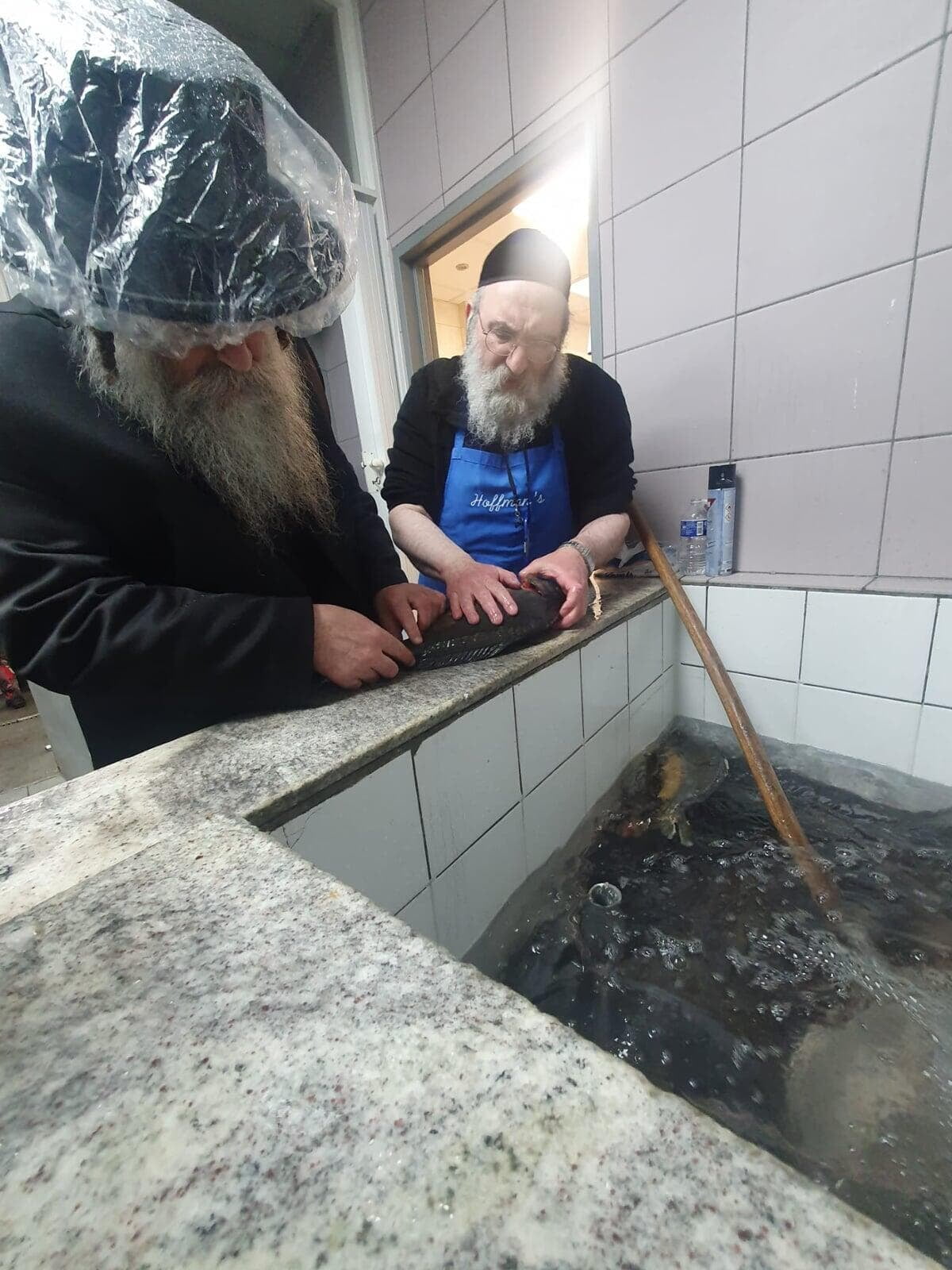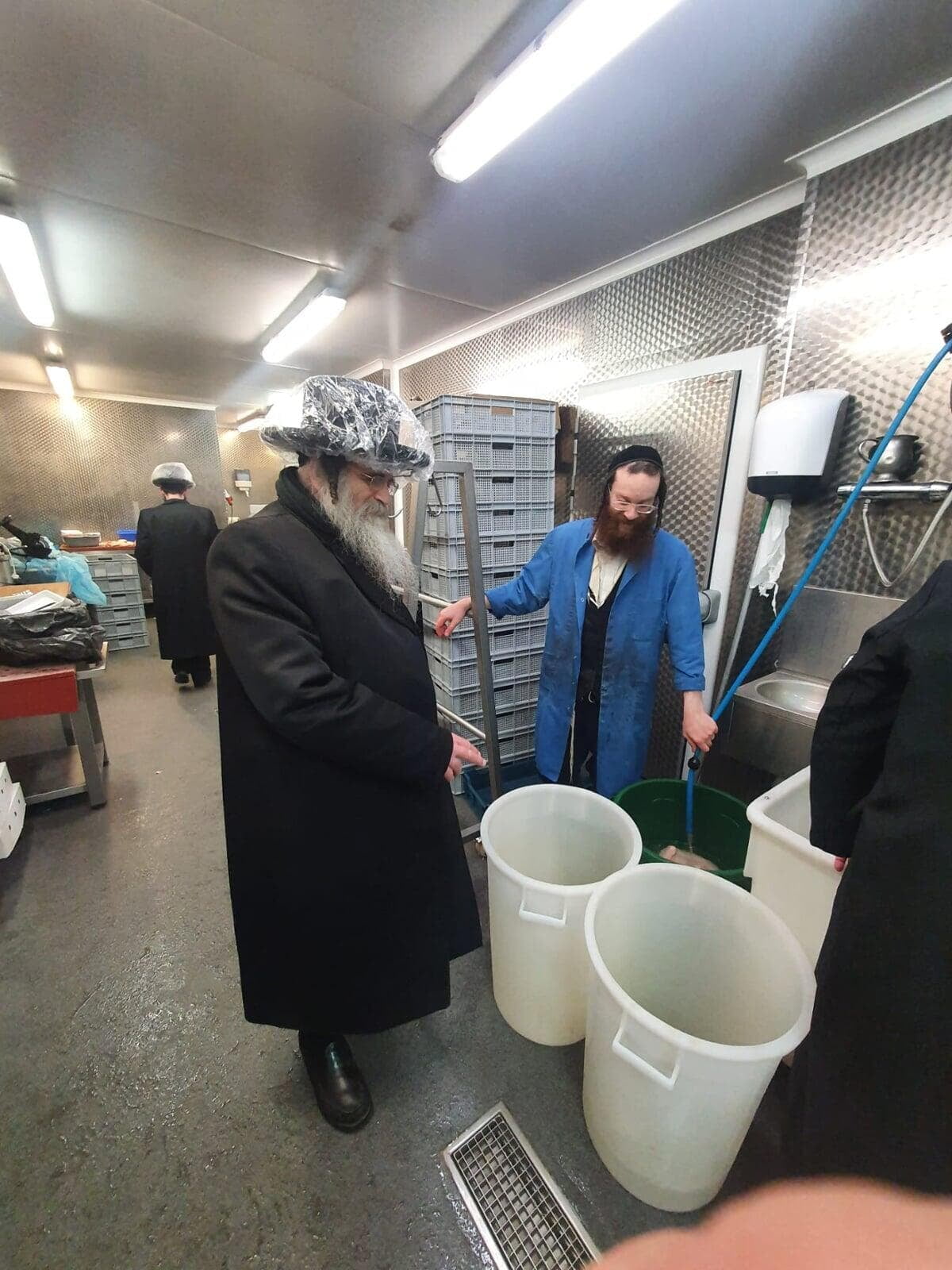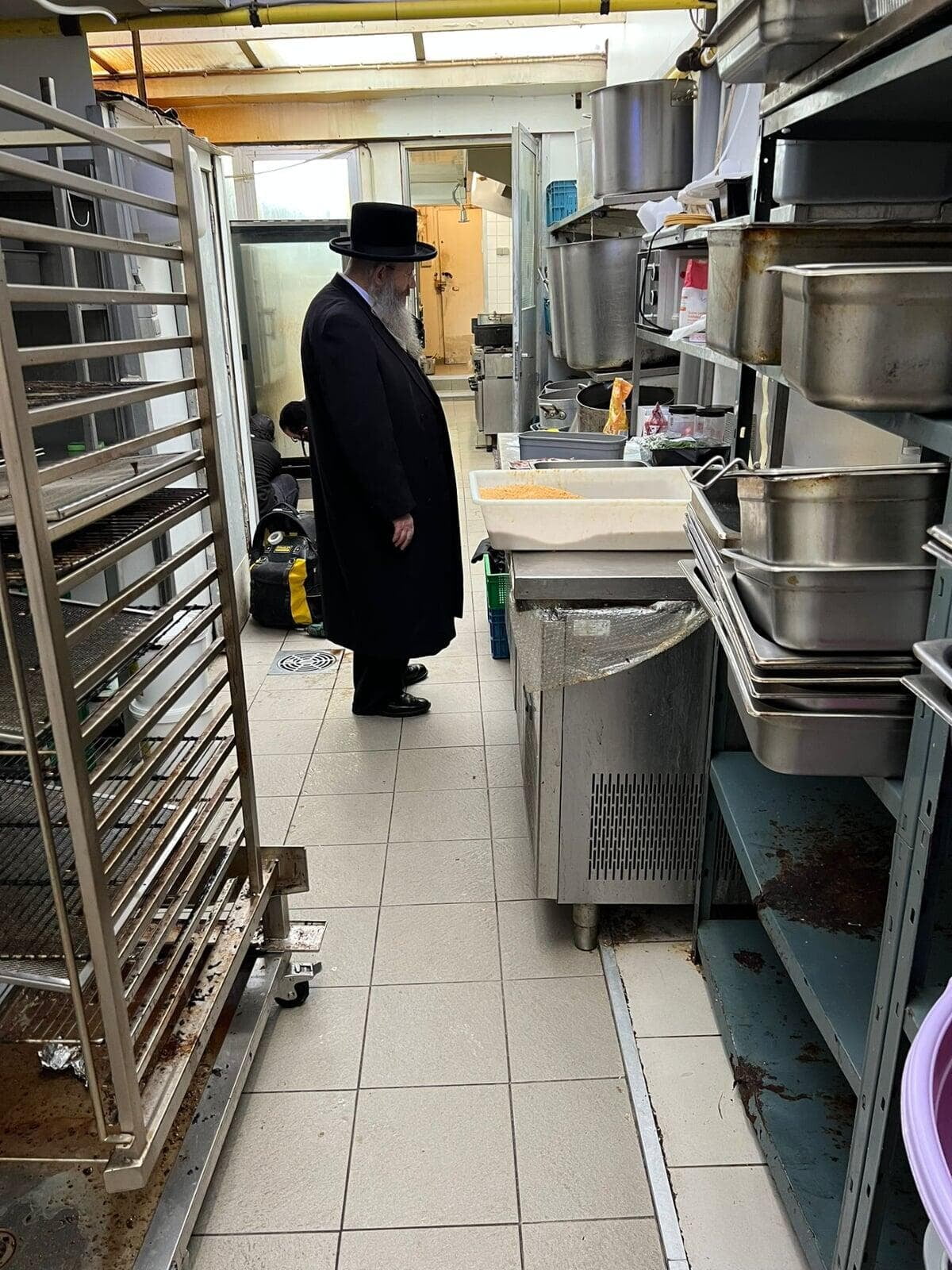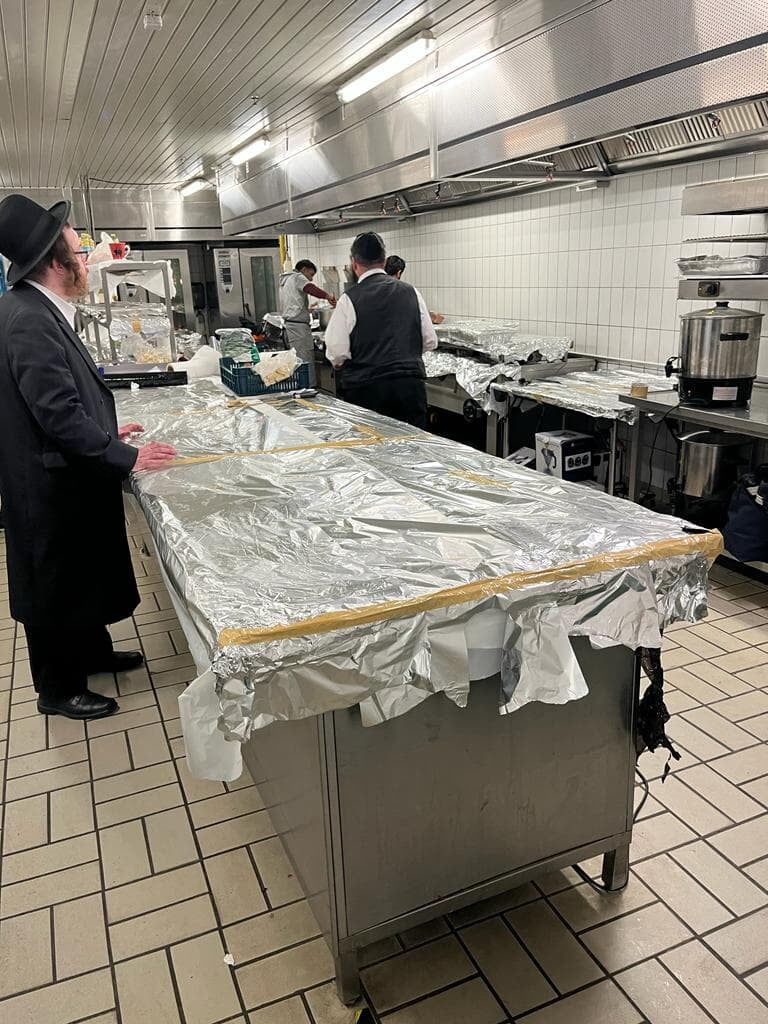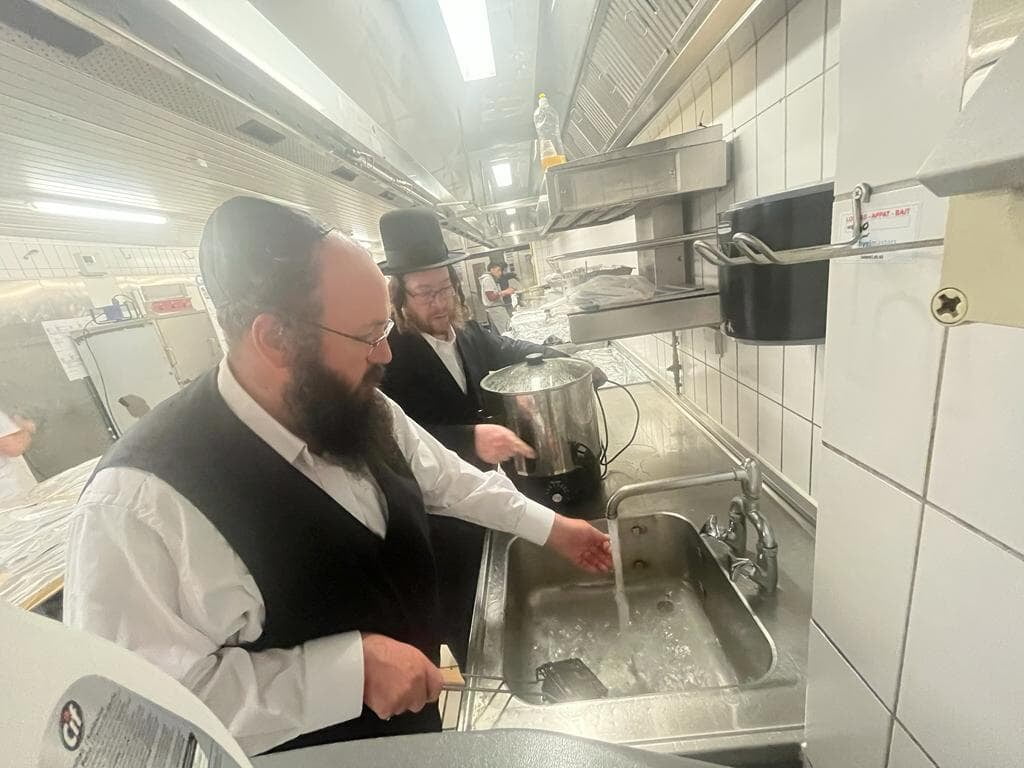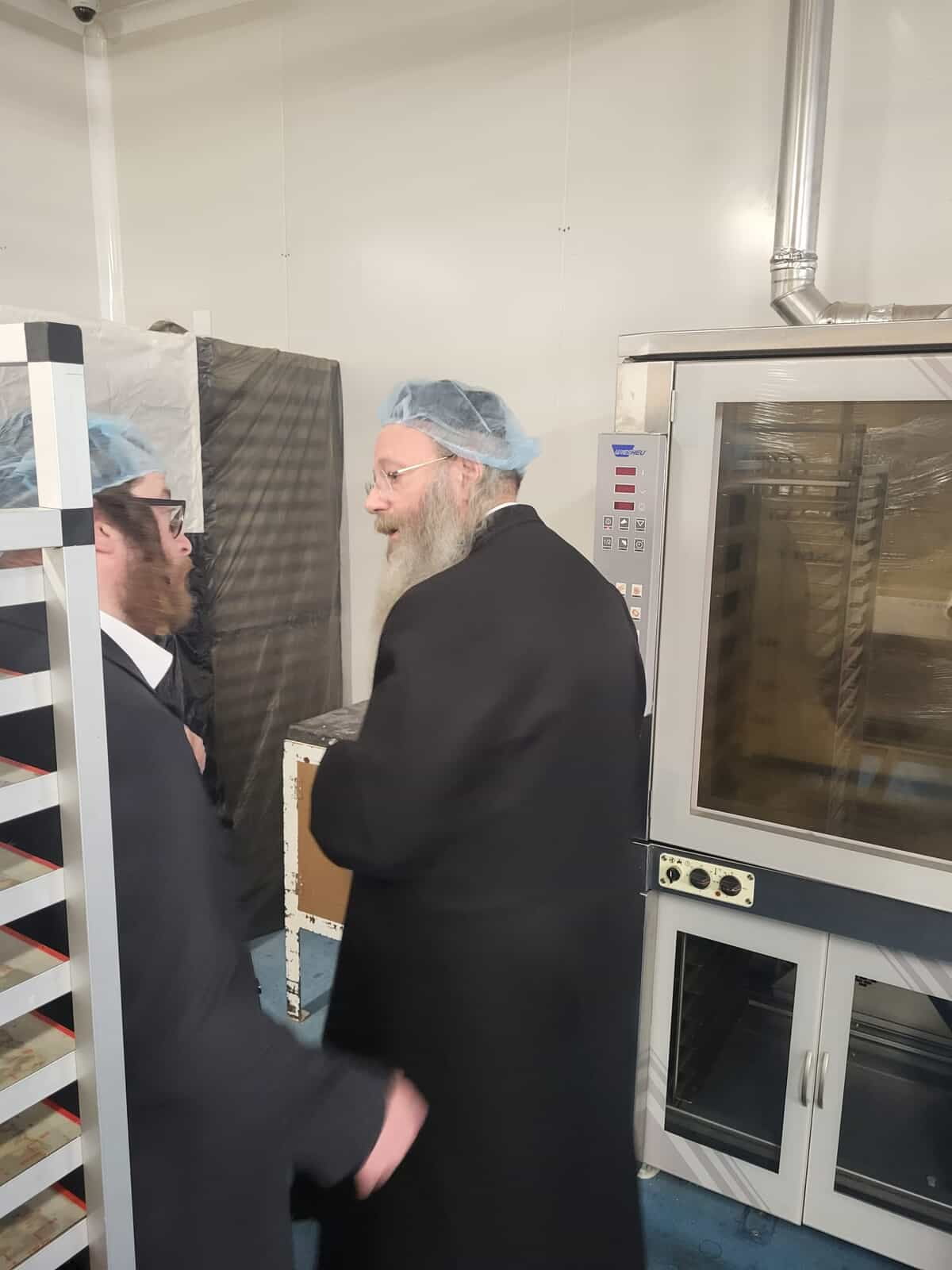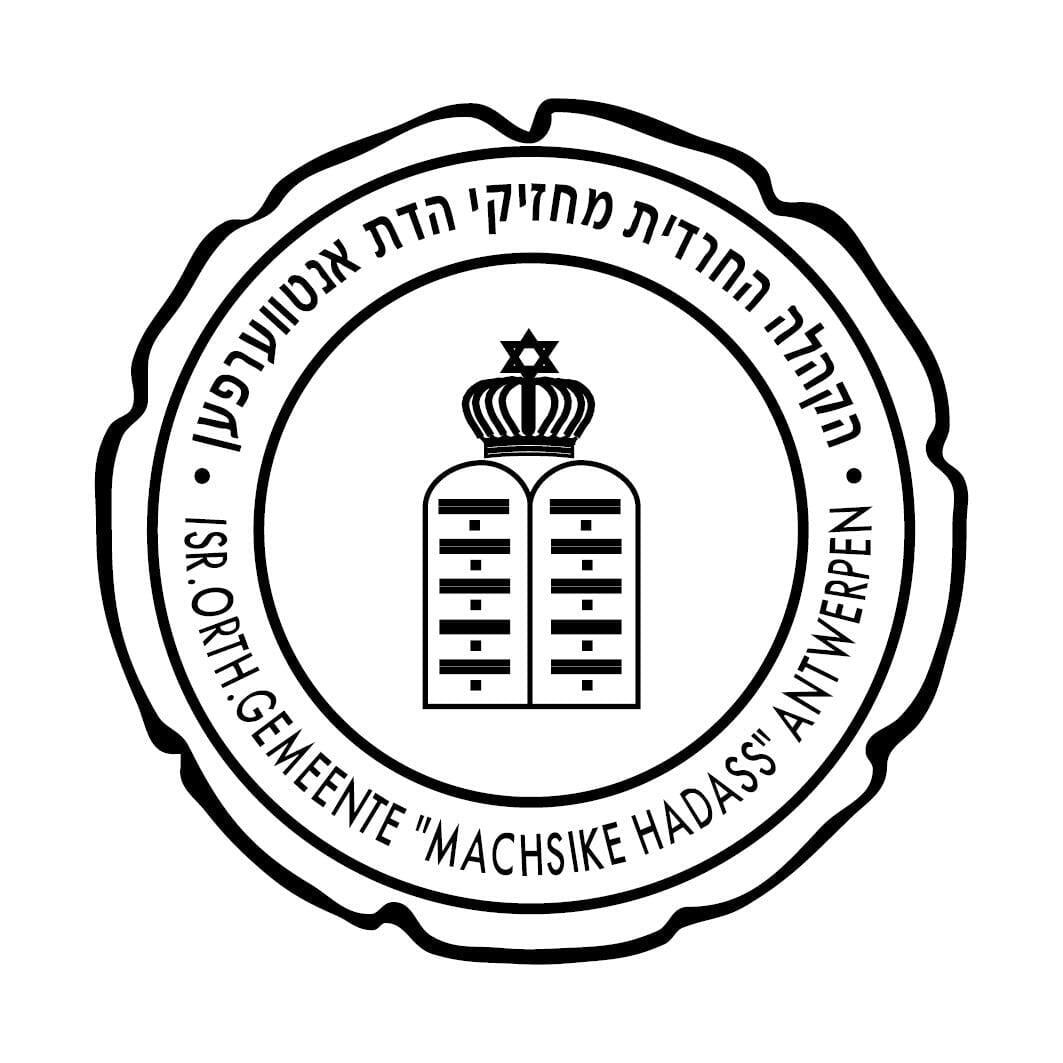IMPORTANT NOTICE :
|
BELANGRIJKE OPMERKINGEN:
- Vis of visfilets van geoorloofde vissoorten mogen alleen worden gekocht - vers of bevroren - als de schubben nog zichtbaar zijn.
- Gehakte vis kan alleen worden gekocht met een Hechsher.
- ·Gerookte vis mag alleen worden gekocht met een Hechsher.
- Omdat karpers wormen hebben die zeer moeilijk te herkennen zijn, kunnen ze alleen met een Hechsher worden gekocht.
- Als vis werd gesneden met niet-koosjer keukengerei, moet het oppervlak van de vis onder stromend water worden gespoeld en geschrobd.
- Indien mogelijk moet men de niet-koosjere gebruiksvoorwerpen schrobben en grondig wassen voordat u ze gebruikt
- De merknaam van vis kan van gebied tot gebied verschillen.
- Geïmporteerde vis wordt heel vaak verkocht onder de naam die bekend staat als in het land van herkomst.
- Onlangs bleek dat er onbekende vis wordt verkocht (vaak uit het Verre Oosten). Neem in geval van twijfel contact op met uw Rabbijn.
- Zalm (lox) moet grondig worden gewassen en geschrobd om de wormen te verwijderen, die zeer moeilijk te herkennen zijn.
- Andere vissen, die vaak besmet zijn met wormen, moeten ook worden gecontroleerd.
THE DIFFERENCE between “KOSHER” with our “HECHSHER LOGO’’ and “KOSHER” from our “KASHRUS LIST”.
השגחה עם "חותמת כשרות" לעומת "רשימת הכשרות" דקהילתנו ישנם מוצרים שנעשים בהשגחה ע"י מערכת כשרות, לעומתם ישנם מוצרים המופיעים ב"רשימת כשרות", ולכן חשוב מאד להבהיר ולחדד את ההבדל ביניהם.
א) מוצר עם הכשר ממערכת כשרות:
רב או משגיח מיוחד מטעם מערכת הכשרות (תלוי במורכבות של המוצר) בודק את המפעל ואת תהליכי הייצור, אם יש צורך להכשיר את המפעל. בודק את מערכת החימום, תהליך הייצור והאריזה וכו' וכו', ולאחר שהוא מאשר את המפעל מסכמים על מרכיבי הייצור, המפעל מגיש רשימה מפורטת של כל המרכיבים הנכנסים למוצר, שהם צריכים להיות מאושרים ע"י הרבנות.
עם הייצור מגיע משגיח מטעם מערכת הכשרות, מכשיר את קו הייצור לפי ההוראות של רבני מערכת הכשרות, בודק את המרכיבים בהתאם לרשימה הנמצא בידו, ובסיומו הוא מאשר את תחילת הייצור. המשגיח נוכח בדרך כלל בכל תהליך הייצור, מתחלתו ועד סיום האריזה, להוציא כאשר רבני מערכת הכשרות קובעים שדי ב"יוצא ונכנס". המשגיח בודק אם אכן רק המרכיבים המאושרים מוכנסים למוצר, עוקב אחר הכמויות הנכנסות והיוצאות, וכשיש צורך מדליק את התנורים כדי שיהיה בישול ישראל, ובסופו של דבר הוא מחתים על האריזה את חותמת הכשרות.
ב) מוצרים הנכללים ברשימת כשרות:
רב או משגיח מיוחד מטעם מערכת הכשרות עורך בדיקה של תהליך הייצור, בודקים באופן כללי את המרכיבים שבהם משתמש המפעל בקביעות, מוודאים שאין בעיה של עירבוב דברים אסורים ומוצרי חלב, כן בודקים את מה שמייצרים עוד על קו ייצור זה, ובמדת האפשר גם מבקרים באופן אישי במפעל. אולם הייצור עצמו נעשה בלי נוכחות משגיח, לבד מזאת, קיימת האפשרות שהייצרן עלול לשנות את המרכיבים.
כנסת המוצר ל"רשימת הכשרות" היא על סמך "חזקה" שאכן מדובר בייצור שאין בו בעיות של כשרות. אכן נתפשט מאד המנהג אצל הרבה מאחב"י להשתמש אך ורק במוצרים שהם בהשגחה מלאה.
השגחה עם "חותמת כשרות" לעומת "רשימת הכשרות" דקהילתנו ישנם מוצרים שנעשים בהשגחה ע"י מערכת כשרות, לעומתם ישנם מוצרים המופיעים ב"רשימת כשרות", ולכן חשוב מאד להבהיר ולחדד את ההבדל ביניהם.
א) מוצר עם הכשר ממערכת כשרות:
רב או משגיח מיוחד מטעם מערכת הכשרות (תלוי במורכבות של המוצר) בודק את המפעל ואת תהליכי הייצור, אם יש צורך להכשיר את המפעל. בודק את מערכת החימום, תהליך הייצור והאריזה וכו' וכו', ולאחר שהוא מאשר את המפעל מסכמים על מרכיבי הייצור, המפעל מגיש רשימה מפורטת של כל המרכיבים הנכנסים למוצר, שהם צריכים להיות מאושרים ע"י הרבנות.
עם הייצור מגיע משגיח מטעם מערכת הכשרות, מכשיר את קו הייצור לפי ההוראות של רבני מערכת הכשרות, בודק את המרכיבים בהתאם לרשימה הנמצא בידו, ובסיומו הוא מאשר את תחילת הייצור. המשגיח נוכח בדרך כלל בכל תהליך הייצור, מתחלתו ועד סיום האריזה, להוציא כאשר רבני מערכת הכשרות קובעים שדי ב"יוצא ונכנס". המשגיח בודק אם אכן רק המרכיבים המאושרים מוכנסים למוצר, עוקב אחר הכמויות הנכנסות והיוצאות, וכשיש צורך מדליק את התנורים כדי שיהיה בישול ישראל, ובסופו של דבר הוא מחתים על האריזה את חותמת הכשרות.
ב) מוצרים הנכללים ברשימת כשרות:
רב או משגיח מיוחד מטעם מערכת הכשרות עורך בדיקה של תהליך הייצור, בודקים באופן כללי את המרכיבים שבהם משתמש המפעל בקביעות, מוודאים שאין בעיה של עירבוב דברים אסורים ומוצרי חלב, כן בודקים את מה שמייצרים עוד על קו ייצור זה, ובמדת האפשר גם מבקרים באופן אישי במפעל. אולם הייצור עצמו נעשה בלי נוכחות משגיח, לבד מזאת, קיימת האפשרות שהייצרן עלול לשנות את המרכיבים.
כנסת המוצר ל"רשימת הכשרות" היא על סמך "חזקה" שאכן מדובר בייצור שאין בו בעיות של כשרות. אכן נתפשט מאד המנהג אצל הרבה מאחב"י להשתמש אך ורק במוצרים שהם בהשגחה מלאה.
השגחה עם "חותמת כשרות" לעומת "רשימת הכשרות" דקהילתנו ישנם מוצרים שנעשים בהשגחה ע"י מערכת כשרות, לעומתם ישנם מוצרים המופיעים ב"רשימת כשרות", ולכן חשוב מאד להבהיר ולחדד את ההבדל ביניהם.
:א) מוצר עם הכשר ממערכת כשרות
רב או משגיח מיוחד מטעם מערכת הכשרות (תלוי במורכבות של המוצר) בודק את המפעל ואת תהליכי הייצור, אם יש צורך להכשיר את המפעל. בודק את מערכת החימום, תהליך הייצור והאריזה וכו' וכו', ולאחר שהוא מאשר את המפעל מסכמים על מרכיבי הייצור, המפעל מגיש רשימה מפורטת של כל המרכיבים הנכנסים למוצר, שהם צריכים להיות מאושרים ע"י הרבנות
עם הייצור מגיע משגיח מטעם מערכת הכשרות, מכשיר את קו הייצור לפי ההוראות של רבני מערכת הכשרות, בודק את המרכיבים בהתאם לרשימה הנמצא בידו, ובסיומו הוא מאשר את תחילת הייצור המשגיח נוכח בדרך כלל בכל תהליך הייצור, מתחלתו ועד סיום האריזה, להוציא כאשר רבני מערכת הכשרות קובעים שדי ב"יוצא ונכנס". המשגיח בודק אם אכן רק המרכיבים המאושרים מוכנסים למוצר, עוקב אחר הכמויות הנכנסות והיוצאות, וכשיש צורך מדליק את התנורים כדי שיהיה בישול ישראל, ובסופו של דבר הוא מחתים על האריזה את חותמת הכשרות.
:ב) מוצרים הנכללים ברשימת כשרות רב או משגיח מיוחד מטעם מערכת הכשרות עורך בדיקה של תהליך הייצור, בודקים באופן כללי את המרכיבים שבהם משתמש המפעל בקביעות, מוודאים שאין בעיה של עירבוב דברים אסורים ומוצרי חלב, כן בודקים את מה שמייצרים עוד על קו ייצור זה, ובמדת האפשר גם מבקרים באופן אישי במפעל. אולם הייצור עצמו נעשה בלי נוכחות משגיח, לבד מזאת, קיימת האפשרות שהייצרן עלול לשנות את המרכיבים. כנסת המוצר ל"רשימת הכשרות" היא על סמך "חזקה" שאכן מדובר בייצור שאין בו בעיות של כשרות. אכן נתפשט מאד המנהג אצל הרבה מאחב"י להשתמש אך ורק במוצרים שהם בהשגחה מלאה.
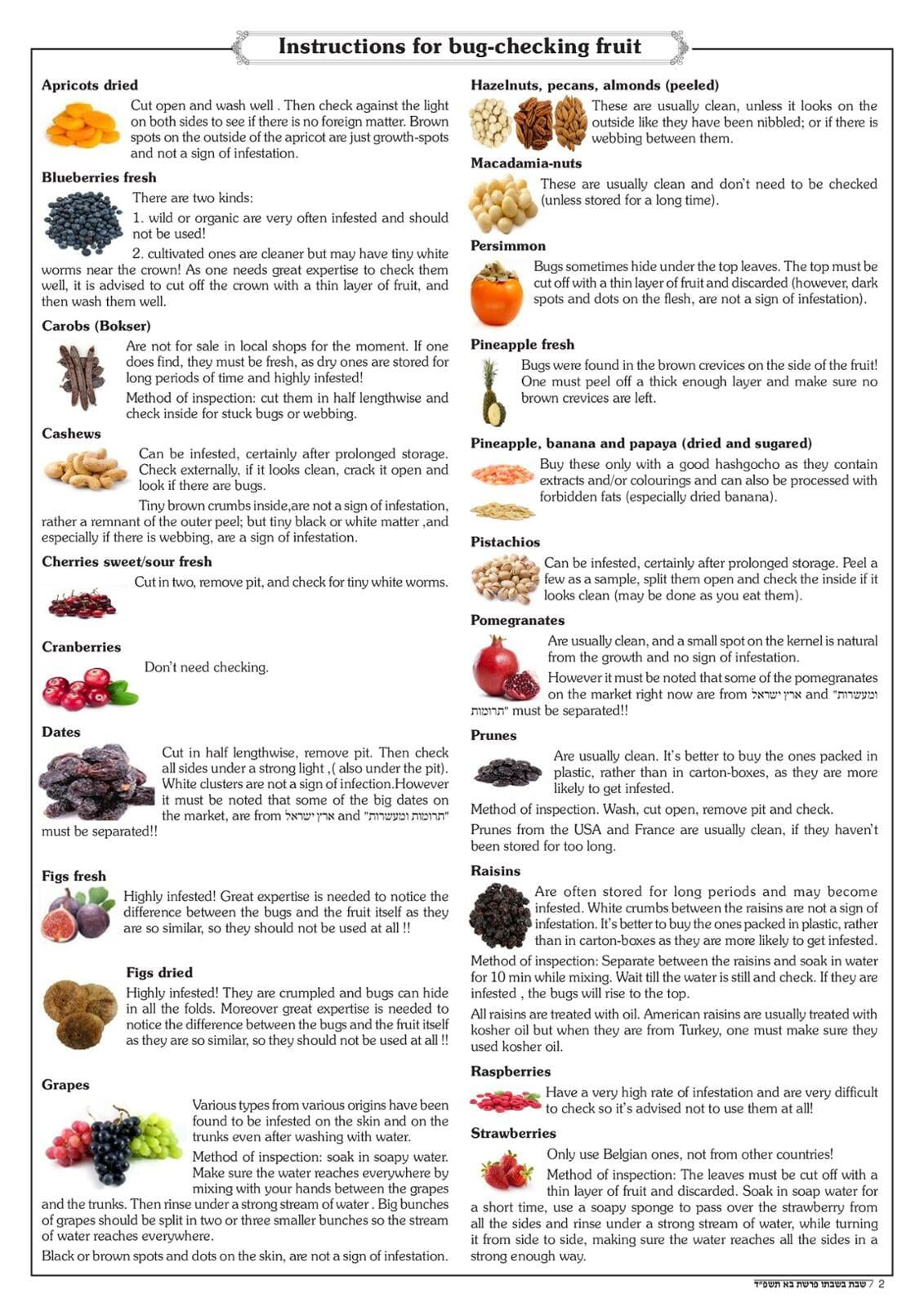
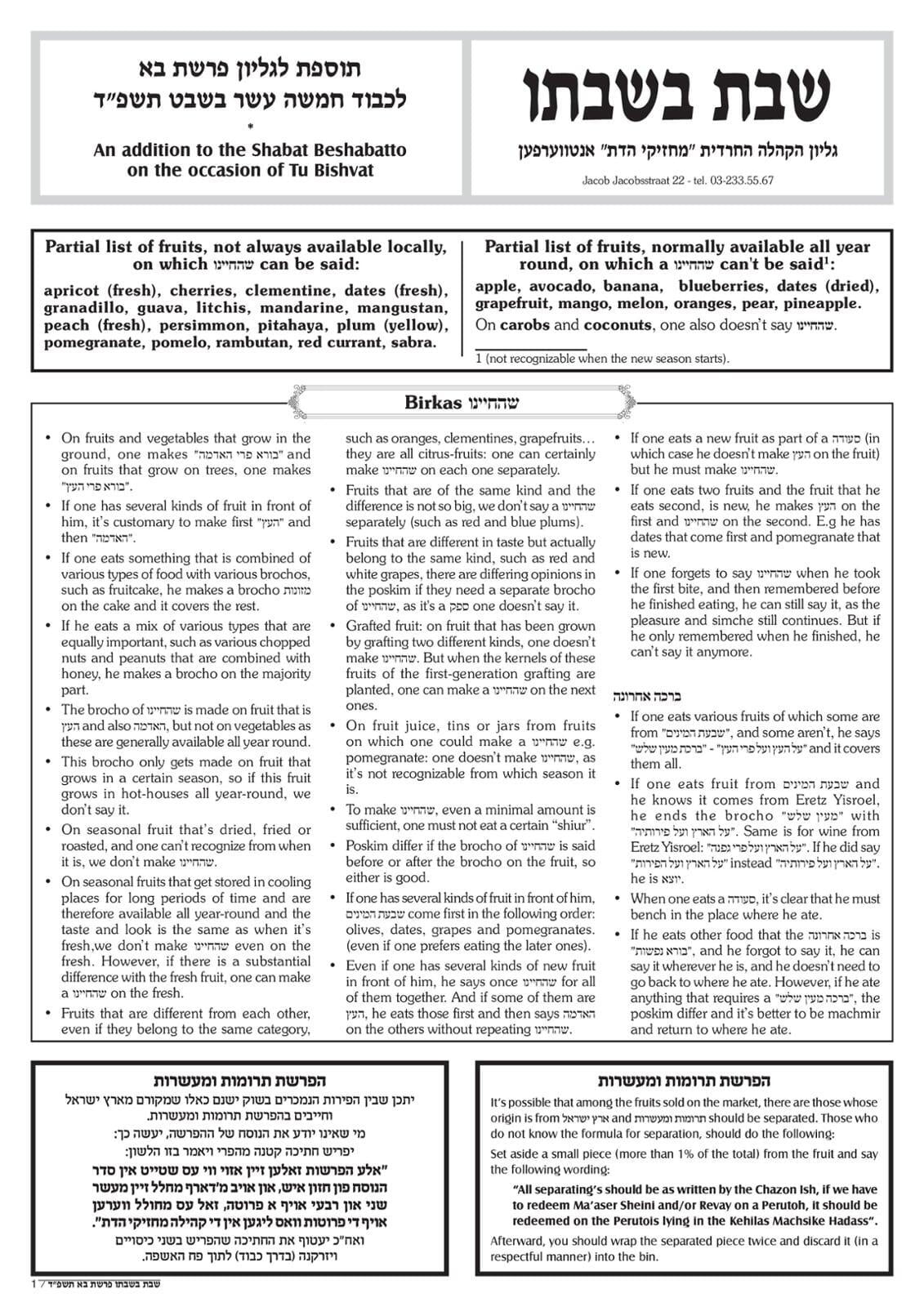
Kashrus
One of the most important services that are offered to the residents of our community, is כשרות, in which the Kehile invests a lot of energy; whether known or unknown to the rest of the community.
Dozens of mashgichim are employed by our Kehile. These mashgichim travel to the many restaurants, shops and factories in different places, day and night, keeping a watchful and uncompromising eye on every process that happens within their walls.
The Dayanim of our Kehile and the experts on כשרות who work on their behalf, are always available: to monitor, teach and instruct, guide direct and to check with the intent of ensuring that there are no breaches in our standards. They do all of this with one major goal in mind: every food and drink item that enters the homes of the residents of our city, must and will be kosher to the fullest extent according to Halacha, without a חשש of issur,chas veshalom.
Uncompromising approach
The כשרות framework of our Kehile adheres to an uncompromising approach within every aspect of כשרות. Even in matters where leniencies could possibly be found - and indeed where it is appropriate to be lenient in case of extreme need- our Kehile is careful not to compromise on our standards. We try to maintain the highest level of כשרות and strictness; that which is appropriate and fitting for a community of Yirei Shomayim who are uncompromising in their Torah standard.
Looking through the eyes of one who is not familiar with the details of כשרות - this can sometimes be seen as minor details. That person might think there are those who insist on being stringent where it would be right to be lenient. Sometimes the bewilderment is even expressed aloud: (מדוע ככה עשית?" (מלכים-א א,ו".
This is a valid question. It is found in Chazal (ברכות סב): the אמוראים tried to understand and demanded from their Rabbis an explanation: "תורה היא וללמוד אני צריך!" And indeed their Rabbis took their questions seriously.
That's why we will also follow the words of Chazal and describe in the following lines the main points of the approach of the Rabbis and Dayanim of our Kehile on the subject of כשרות.
Chapter one
וכשר
The approach of our Chachamim and Rabbis to the topic of כשרות in food items
What is the difference between forbidden food and the rest of the Torah prohibitions?
A first glance at the words of Chazal, and a quick glance at the sources of the Rishonim and Acharonim - proves with what sacred trepidation they treated the issue of kosher foods - how they extolled its importance and expressed themselves in ways that cannot be found by other Torah prohibitions.
In Chazal we find two key expressions:
טמטום הלב: The first expression we find in the issue of forbidden foods, is טמטום הלב caused by eating them (.יומא לט).
Based on the Rishonim (See Ramban Shemot 22:3) we can conclude that טמטום הלב is a natural reaction caused by the nature of the food, even if it was eaten בשוגג or באונס.
We see this as well in the psak of the Remo (שו''ע יו''ד סימן פא, ז): a child must be restrained from eating forbidden food. MiDeRabanan the father of a child that is in the midst of eating forbidden food, is not required to remove the food. However, since this causes טמטום הלב, one should remove the forbidden food from the child.
גנאי: Another thing we find in forbidden foods, more than other prohibitions, is that it is "גנאי ביותר" - it is “extremely derogatory” (רבינו תם תוס' שבת יב: ד"ה רבי נתן, והר"י בתוס' חולין ה: ד"ה צדיקים) The commentaries there even make it clear that when it is said, "אין הקב"ה מביא תקלה לצדיקים” this is only regarding forbidden foods.
This matter requires extra attention: Why are forbidden foods different from all the other prohibitions?
The answer is that food is not external to a person. It enters a person’s body, the heart and brain and sustains the soul. (You are what you eat.)
When a person eats forbidden foods -it is not just that he violated a mitzvah, but essentially his body is now being sustained by the essence of something forbidden. This is the reason for the distinctive importance that Chazal give to כשרות in food items.
(על-פי מכתבו של מהר"י אבן תיבון שנכתב בשליחות רבו הרמב"ם; מובא בספר 'דגל מחנה אפרים' פר' ראה)
The approach of the Acharonim
Based on the previously explained דברי חז"ל, it is easy to understand why the Acharonim expressed themselves with great severity and sacred trepidation in matters of forbidden foods, even when the halachos deviate from the usual rulings.
A questions was once brought to the Chasam Sofer, about a sick boy who was not of sane mind. It became necessary to put the boy in a non-Jewish institution where he would have to eat non-kosher food. The Chasam Sofer detailed a full page of reasons why this would be allowed, and yet ended with these words: :
זה נראה לעניות דעתי מעיקר הדין, ומכל מקום העידו קדמונינו ז"ל שעל-ידי מאכלות אסורות בנערות, מטמטם הלב ומוליד לו טבע רע, עדיין אני אומר: מוטב יהיה שוטה כל ימיו וכו
(שו"ת חתם סופר או"ח סי' פ"ג)
"In my opinion, this seems to be the main point of the law, and even so; Chazal state that eating forbidden food in one’s childhood dulls the heart and gives birth to a bad nature, I still say: it is better to be a fool all his days, etc.”
Another story is told about an esteemed woman who went to Rabbi Akiva Eiger zt”l and expressed her woes about her fifteen-year-old son who was completely unable to learn Torah - unlike all her other sons who excelled in their Torah learning.
Rabbi Akiva Eiger zt”l answered, that her son must have stumbled in his childhood and eaten something which was forbidden. The mother went home and asked her son multiple times when this could have happened. After a while, the boy told her that when he was five years old, he once passed by a wedding hall with his friends. The Baal Simcha invited them to come in and enjoy the feast, and he ate a plate of meaty soup.
The boy’s father went to inquire who the mechuten was of that wedding, and who the שוחט was who provided the meat. He found out that they were all good and kosher Yidden.
They did not let up, and continued to delve into the matter. After much pressure and persuasion, it came to light that the groom had been previously married and divorced his first wife. The Rabbis of the time, led by the Baal HaTanya, opposed the divorce and came out against the groom. They even wrote (שו"ע הרב, תשובה לט) that the meat which was slaughtered for this wedding would be a ”Neveilah” and the child who eats this meat, defiles his mind.
Even though the meat was slaughtered in a kosher shechita, it was considered ”Neveila” because the Baal HaTanya said so.
From these stories we can see the importance of this matter.
The chronicles of our nation’s history tell of Gedolei Yisroel and even the simplest of people that were Moser Nefesh so they would not have to sin with forbidden food. They were even moser nefesh in times of true hardship and distress, when this meant putting their lives in danger.
Siyata Dishmaya
The words of our chachamim and rabanim zt”l, who emphasized the importance of kosher food even beyond the requirements of the Halacha, are the foundation of our Kehile’s approach. They tell us to be extremely careful in the matter of kosher food, even in situations where one might possibly be lenient.
In the natural order of things, there is sometimes room for improvement. And thus our Kehile works hard on improving anything possible, as soon as we can.
However, it is clear that for such a complex issue as כשרות, we need a large dose of Siyata Dishmaya. And there is no doubt that a Kehile of Yirei Shomayim, which was founded by Gedolei Yisroel zt”l merits a special Siyata Dishmaya.
It is appropriate to paraphrase an excerpt from the speech of our Rav HaRav Chaim Kreiswirth zt”l at an event in the honour of the mosad Jesode-HaTorah.
The Gemara (ברכות סג:) states that our Rabbis entered the “vineyard” in Yavne - it was given the name כרם, “vineyard” because the Rabbis sat in rows like vines in the vineyard. The Gemara goes on to say that it was Rabbi Yehudah, Rabbi Yossi, Rabbi Nechemia and Rabbi Eliezer the son of Rabbi Yossi HaGlili.
Rav Kreiswirth zt”l asked: “Why does the Gemara mention all the Rabbis who were there? Why does it matter to us? Those who spoke should be mentioned, but why mention the ones who did not speak?
The answer is, said Rav Kreiswirth zt”l; that the Gemara wants to teach us the importance of the vineyard in Yavneh. The importance of the ones who sat there, of the ones who founded it. An institution established by Gedolei Yisroel has Siyata Dishmaya.
Rav Kreiswirth said: "I once knew of an institution that was headed by excellent people, Yirei Shomayim. But for many years it did not succeed in developing their students to their full potential - and the reason is: the institution was originally founded by משכילים. It is the establishment of the institution that gives the spirit and the atmosphere to the institution, and that is what determines the degree of Siyata Dishmaya that the institution will have, that’s why the mosad “Jesode Hatorah”, which was established by Gedolei Yisroel will definitely be zoche to Siyata Dishmaya”.
We have brought this excerpt, because our Kehile - which was founded by Gedolim, and under who the majority of God-fearing people in our city live- will surely receive Siyata Dishmaya, that we will be able to serve the residents of Antwerp with devotion, and provide kosher and mehudar food.
Necessary caution
In light of this, it is understandable to all the extent of caution required regarding כשרות.
The Admor of Pshevorsk zt”l once said:
?וואס איז דער חילוק פון א ערליכער ייד און א נישט ערליכער ייד
א ערליכער ייד לייגט גארנישט אריין אין מויל, ווילאנג ער ווייסט נישט אז ס'איז כשר; א נישט ערליכער ייד לייגט אלעס אריין אין מויל ווילאנג ער ווייסט נישט אז ס'איז טריפה
(What is the difference between a God-fearing Jew and one who is not?
A God-fearing person does not put anything in his mouth until he clearly knows that it is kosher; One who is not God-fearing will eat anything in his mouth as long as he knows it’s not Treif.)
When Avraham Avinu sent Eliezer to find a wife for Yitzchak, it says:
(ויאמר אברהם אל עבדו זקן ביתו המושל בכל אשר לו שים נא ידך תחת ירכי (בראשית כד,ב.
HaGaon Rav Chaim of Brisk zt”l once saw in the holy Be’er Mayim Chayim a משל from this pasuk, that he used to repeat very often. A question is raised when reading the pasuk : Did we not know until now who Eliezer was, that the Torah has to expound and say that he was "עבדו זקן ביתו המושל בכל אשר לו" - “his old servant, who was responsible for his household and everything he owned”?
This is compared to a hungry man who entered a new city. On his way he saw a restaurant with a sign that said “kosher”. He went into the restaurant and ate a meal. However, a Yid who is more careful would not enter before he found out who the owner is of the restaurant; to find out if the owner is a Yirei Shomayim and if he can be relied on. And if a Yid is even more careful and stringent, he would inquire by Talmidei Chachamim or the Rav of the town what the kosher status is of the restaurant.
Now, if that man came to a town, and wanted to do business with the residents of the town, he would never rely on a sign or any person. He would investigate and scrutinize the person he wanted to go into business with, until he was absolutely sure of his integrity. That is the way people usually act.
But, with Avraham Avinu, the opposite was true. Eliezer was entirely responsible of Avraham Avinu’s money and possessions “המושל בכל אשר לו”, while he did not rely on Eliezer to find Yitzchak a wife until Eliezer was warned and he swore to follow Avraham Avinu’s directions.
Chapter two
והמכשלה
A concise look at the multiple issues that can be a problem in the world of כשרות
After having discussed the words of Chazal on the subject of כשרות, we will now describe the reality of the כשרות market, focusing a little on the aspect of meat.
Problems found in the shechita of cattle (בקר)
a. The speed of movement of the meat parts: Another one of the common obstacles is the speed of the factory lines. The parts of the animals move along the factory line at a very fast pace, marked with a number. They are on the very same line as parts of animals which are Neveilah.
The mashgiach הבודק stands ready and when the animals of the Shechita (marked with a number) arrive, he has to check the lungs for treifa.
You need a staff of Mashgichim running around having control over every part of this high-speed process. Even one second of inattention can cause a piece of "Neveilah" to be mixed with the kosher ones.
b. Opening the inside of the animal using a chainsaw:
In many slaughterhouses, it is customary that after the slaughter the animal is cut open along its entire length using an electric saw. There is a risk that following the separation between the meat and the lung, there can be a loosened adhesion - סירכא (impossible to check afterwards) which renders the animal treife.
c. Boiling water on the pieces of meat: In slaughterhouses it is customary to pour water over the pieces of meat to clean them.
We recently visited a big slaughterhouse, that rents out the slaughterhouse twice a week to private kashrus labels and communities. Our mashgichim saw the workers cleaning the pieces of meat, and especially the place of shechita, with strong streams of water. In the middle of the process we noticed that it was actually boiling water from a first vessel - according to the Halacha, an pouring from a first vessel (כלי ראשון) cooks כדי קליפה. This means that the blood cannot be removed by means of salting.
We asked the slaughterhouse to lower the heat level, so that it would not be יד סולדת בו. They agreed, but expressed their surprise. After all, they’ve had many clients, and none of them had ever expressed concern!
Problems found in shechita of poultry
d. Signs of Treifus in poultry: Nowadays, poultry is raised industrially. This means that thousands of birds are put in a crowded coop and fed processed food saturated with hormones, so that within a few weeks they will grow and be ready for slaughter.
This way of breeding causes the poultry's organs to be weak, and there will be many signs of treifus in the poultry, especially at the tendons (which connect the bottom of the poultry to the leg), the lungs and the intestines.
In our Kehile, there is a team of maschgichim that specializes in the tests to check all the tendons longs and intestines for signs of treifus.
There were times at the slaughterhouse that the birds were moving so quickly it was impossible to check all the tendons. The owner refused to slow the process down. We had to tell him that we could not stay if he did not slow the line down.
It seems, after many inquiries with various hechsherim, that there are many who do not check the tendons of the poultry at all. The reason they give: this used to be the custom: the mashgiach would check the internal organs for signs of treifus only if there was an indication that it needed to be checked. But the tendons, lungs and intestines were not checked since these are not common occurrences which would require checking all the birds.
But the reality has changed. In the times of those customs, the chickens were raised in free-range, and were fed natural unprocessed grains, so there were no signs of treifus in the tendons. Nowadays, however, anyone who takes the time to check would often see signs of treifus.
And the alarming question arises: How can ‘hechsherim’ in our times readily grant a ‘kosher lemehadrin’ status to the poultry, without checking the tendons, lungs and intestines, when they have so many signs of treifus?
We could elaborate on the many other problems that occur, but that is beyond the scope of this work. However, it is vital that we protect ourselves from these problems, with lots of Siyata Dishmaya. Protecting ourselves depends also a lot on the understanding and recognition of the issues by the community...
A lack of fresh meat and poultry
We would like to take this opportunity to clarify the reason for the occasional shortage of meat in our community.
a. Our uncompromising approach to כשרות, have caused some owners of slaughterhouses to make us ‘persona non grata’. They reasoned that not enough kosher meat comes out when slaughter (on average 25-30% of the animals that were slaughtered).
b. Due to the new laws regarding שחיטה in Belgium, we are required to search for slaughterhouses in different countries. This entails great logistical difficulties, including: sending the entire team of שוחטים, mashgichim and more, to arrange lodging, etc. Obviously this also increases tremen desly the costs.
Chapter three
יראי, אנשי, שנאי
A general overview of who to trust in the field of כשרות
In light of all we have clarified so far, it is clear that it is impossible to trust every ‘stamp of approval’ circulating in the market.
But, how do we know who can be trusted? Below we will list some simple rules of what is required of those who trust the כשרותframework.
a. Qualified Rabbi: The first condition is that there must be a Rabbi who is certified and well known by the Rabbis within the כשרות system, and who knows all the laws and the practicalities regarding כשרות. It is even more worthy if the כשרות is backed by a Beis Din and not only one Rabbi.
b. Does not make profit on כשרות: Another condition - which is not as strict, but certainly adds a measure of trust- is that the Rabbi and mashgiach receive a fixed salary from the community, which is not based on the amount of goods they bring. This prevents subjectivity when determining the כשרות of the food.
c. Responsibility: The person in charge of the hechsher needs to be a responsible person, who examines all the details and visits the place himself. He does not oversee the mashgichim over the phone without having visited the place, and without knowing and understand the details of the process.
d. Unswerving in his opinion: The person in charge of the hechsher needs to be a person who can stand his ground, who will be able to withstand outside pressure and will not succumb to the threats and shouts of the factory managers.
e. Sufficient budget: Besides the conditions regarding the Rabbi and mashgiach, it is necessary that the Kehile or kashrus organization, that they are working for, recognizes the importance of כשרות and will provide the necessary budget and resources. This ensures that the Rabbi and the mashgiach will not be pressured to be lenient where they shouldn’t be, because they fear the reactions of their superiors.
There is a lot more to say about this subject, but the scope of this work doesn’t allow for it.
א. רב מוסמך: התנאי הראשון הוא שיהיה מדובר ברב שהוסמך על-ידי רבנים מפורסמים ומוכרים בתחום הכשרות, ויודע את ההלכות ואת החלקים הפרקטיים הנוגעים לכשרות. חשיבות יתירה יש, כאשר ההכשר ניתן ע"י בית דין, ולא ע"י יחיד
לגבי הכשרות במפעלים, קווי הייצור של 'מחזיקי הדת', מתפתחים והולכים כל הזמן. כאן לא חוסכים במאומה. כל מוצר מזון שניתן לייצר אותו תחת השגחת הקהילה, הופך מתוכניות למעשים. לדוגמא, כך פעלה המחלקה, בשיתוף פעולה ובהרמוניה מושלמת עם השגחת הרב לנדא, רבה של בני ברק, בבואה לייצר מרגרינה מהודרת במפעל בדנמרק. מיץ ענבים למשל, ייצרו בעבר בהונגריה וכיום ישנם יקבים באיטליה ובספרד, שבהם מייצרים מיץ ענבים עבור הקהילה. המיץ נעשה על פי כל הכללים המחמירים ביותר של ההלכה, וכך גם אלו שמחמירים ב'ראיית עכו"ם', יכולים לסמוך בבטחה על המיץ ענבים המיוצרים תחת השגחת 'מחזיקי הדת'. במפעל הדגים המעושנים בהולנד, נמצא משגיח קבוע באורח שיטתי, הבוחן את הליך הייצור מרגע כניסת הדגים למפעל ועד אריזתו וצאתו את שעריו. נוכחות צמודה שכזו, כמעט ואין לשום מערכת כשרות, גם זו המתהדרת בפיקוח מתמיד
ואילו לשוקולד הבלגי, לו יצאו מוניטין, ישנה גם השגחה מחמירה מטעם 'מחזיקי הדת'. ישנם כאלו, שמתירים להכשיר את פסי הייצור, כשמדובר במפעל של נכרים, במי פירות. אולם אנו שמקפידים שההידור יהא בתכליתו, דורשים ממנהלי המפעל להכשיר את המכונות רק באמצעות מים רותחים בלבד, למרות שמדובר בצורך טכני הכרוך בעלויות ובקשיים לוגיסטיים מורכבים
העקביות של 'מחזיקי הדת' אפשר להיווכח, גם כאשר מדובר באמתלא של 'הפסד מרובה', במקרים המותרים כמובן על פי ההלכה, לא מתפשרים כאן על העקרונות ותפישת העולם שאומרת, שגם המחמירים ביותר יוכלו ליהנות מהמוצרים
נכחנו פעם במפעל לייצור מיץ ענבים, והיה עלינו להכשיר את המיכלים באמצעות מים רותחים ומבעבעים, שיגיעו לטמפרטורה של 100 מעלות צלסיוס. בעל היקב לא הבין, מדוע אנו מתעקשים להגיע לרמה כזו גבוהה של מעלות, כאשר רבנים אחרים בקרו במפעל וייצרו כאן מיץ ענבים במתכונת דומה, אולם בהרתחה פחותה מזו שדרשנו. יש להבהיר, כי משך הזמן שלוקח למערכת ההרתחה לטפס ולהגיע לשיא מעלותיה, הוא רב ביותר. מהשעה 7:30 ועד 10:00 בבוקר, הזמן שנקף בעת התעצמות מעלות המים, ניצבו הפועלים באפס מעש, והיה זה הפסד גדול, אבל כאמור, כשאנו מבקשים להגיש לצרכנינו את המיטב, שום שיקול כספי לא יהווה מכשול ואבן נגף בדרכנו
מעולם לא עמד שיקול כלכלי או כספי לנגד עיני מחלקת הכשרות. כאשר הם משרטטים את התוכנית לפני מתן הכשרות למפעל כלשהו, הם בודקים בראש ובראשונה, האם הוא יוכל לעמוד בפני דרישותיהם המחמירות, ורק משנבדקו כל המדדים ההלכתיים והמעשיים לביצוע, ניתן האישור והמחלקה הפיננסית נכנסת לתמונה
עדכון הציבור
מחלקת הכשרות של 'מחזיקי הדת' עומדת בקשר הדוק ושוטף, עם כל ארגוני הכשרות בעולם, ועוקבת אחר שינויים מתבקשים בטכנולוגיות המזון וקווי הייצור השונים
לעיתים קרובות, מפרסמת מחלקת הכשרות כמו גם המחלקות האחרות של 'מחזיקי הדת', הפועלות כולן בשיתוף פעולה הדוקה, עדכונים והנחיות לציבור בעלון השבועי 'שבת בשבתו', כדי שהציבור יהיה מעודכן בהתפתחויות המתחוללות השכם והערב ברחבי תבל בתחומים אלו, במטרה להטמיע את ההוראות וליישם את הנדרש
כאשר התעוררו בעיות בפרי ה-'תות שדה', אננס, וענבים למשל, שבהם ישנו חשש לנגיעות של תולעים וטפילים, עמדה מחלקת הכשרות בקשר עם המומחה הרה"ג רבי פסח אליהו פאלק ז"ל מגייטסעד, ופעלה על פי הנחיותיו ותכתיביו. וכיום ממשיכים בנושא בדיקת התולעים עם גדולי המומחים אשר מלוים את כל הנושא מקרוב. מטעם הקהילה התמנה משגיח מיוחד שממונה רק על ענין בדיקת תולעים ועסוק בזה במשך כל השנה, בודק הפירות והירקות שבשוק אם אינם נגועים בתקופה זו, כדי ליידע את הבד"ץ, ולהדריך את המשגיחים הנמצאים בכל המקומות
מחלקת הכשרות, אינה יכולה מטבע הדברים להעניק את שירותיה באופן מוחלט. ישנם מוצרים רבים כחול הים, שהציבור החרדי נזקק להם, ולא משתלם לייצר אותם במיוחד עבור קהילה קטנה יחסית. לשם כך, בודקים כאן רשימה ארוכה של מוצרים, גם כאלו הנמכרים במרכולים של נכרים. המחלקה, מתחקה אחר סדרת מרכיביו של כל מוצר בפרוטרוט, כגון משקאות, קמח, אטריות, צ'יפס, שמן זית, דגים מעושנים ומגוון רחב נוסף של מוצרים, ולאחר שהיא מוודאת שאין בהם כל חשש ולו הקל ביותר, הוא מנפיקה את הרשימה לציבור. המרכולים מטבע הדברים, יכולים להציע את הפריטים הללו במחירים זולים המוצעים ללקוחותיהם, ובכך דואגת 'מחזיקי הדת' לרווחת הציבור בכל דרך אפשרית
